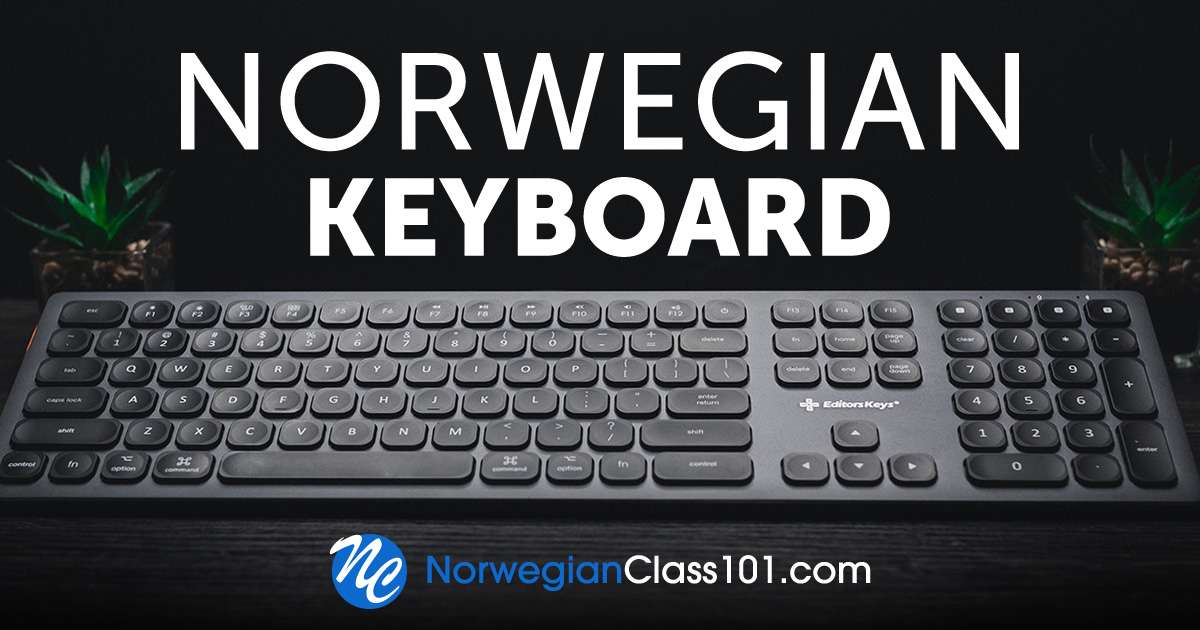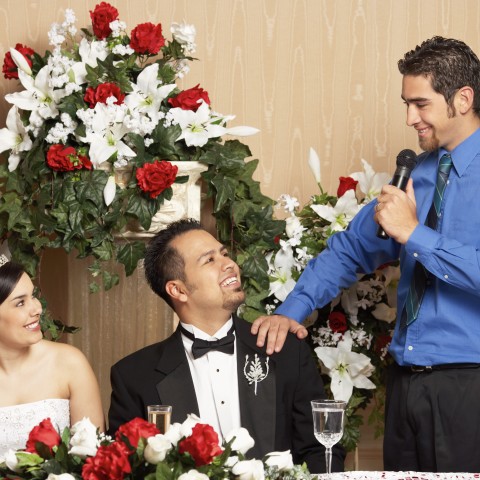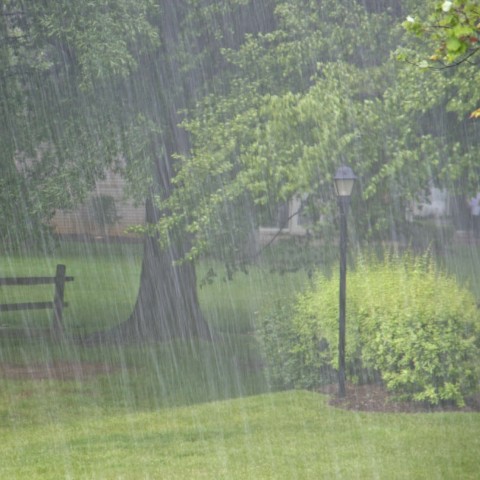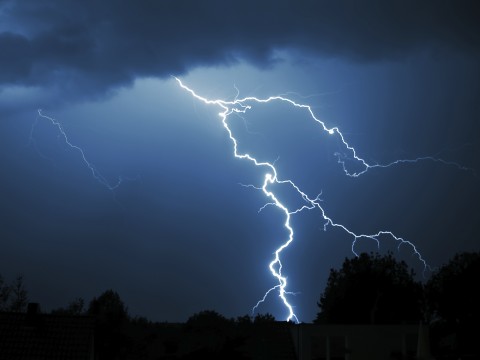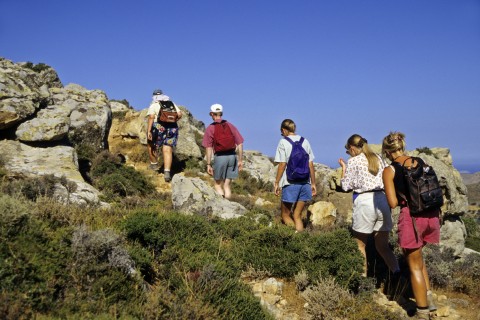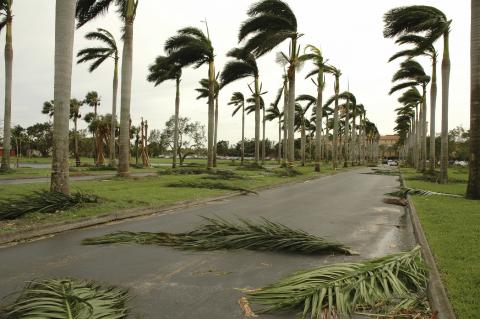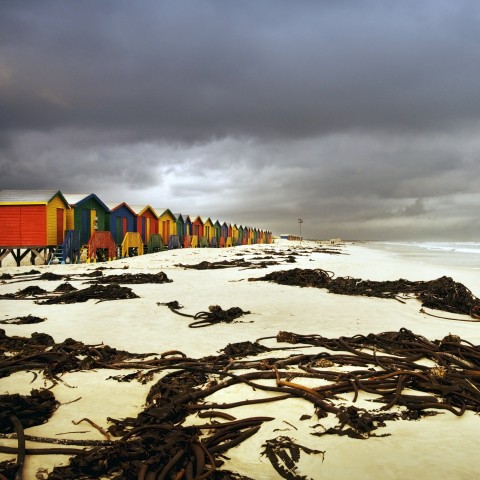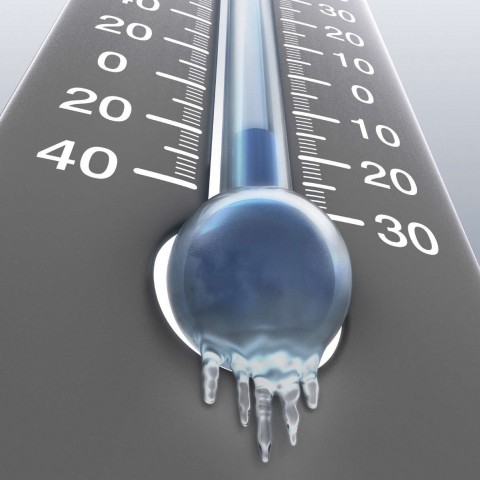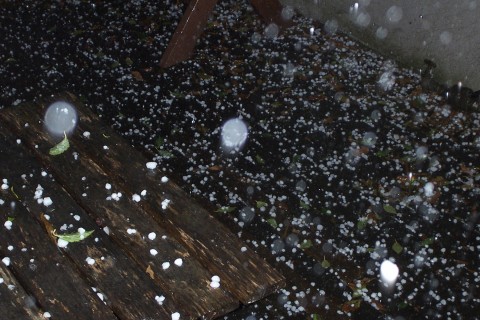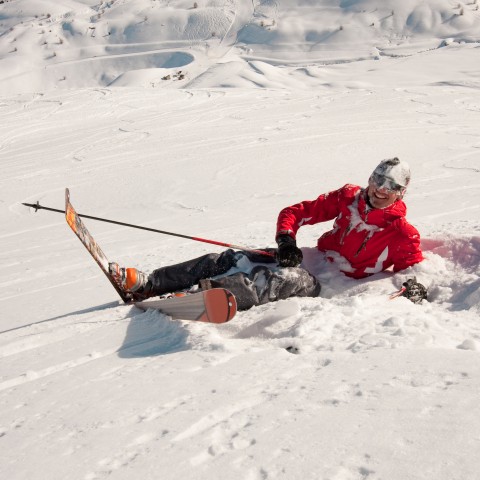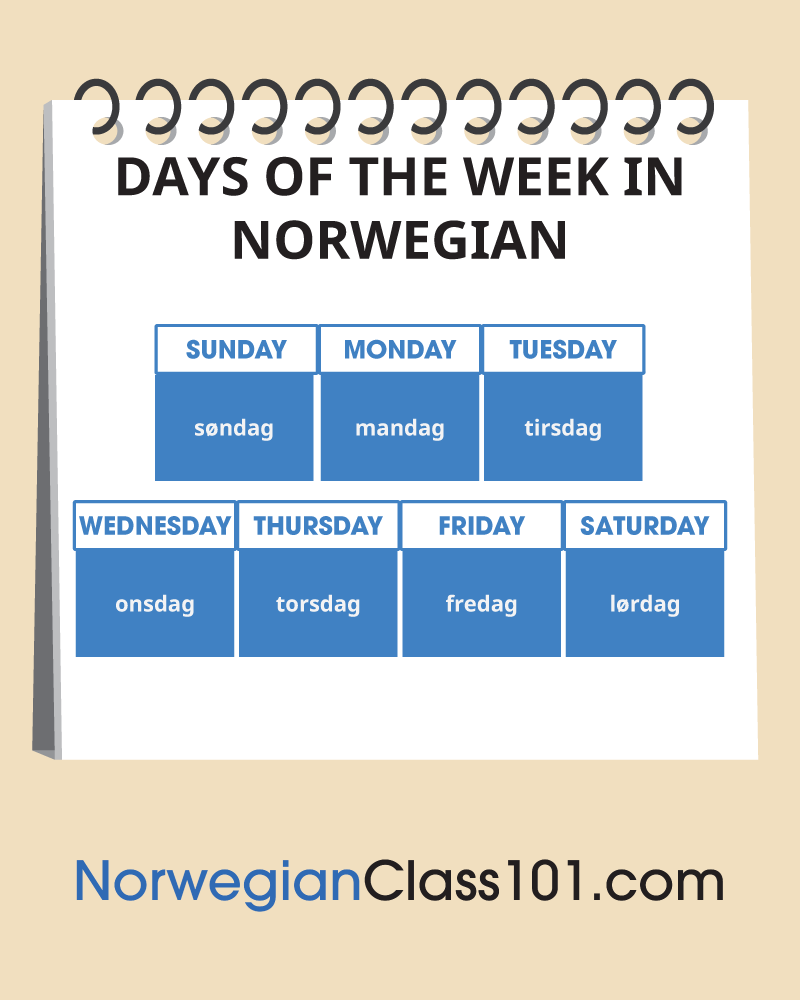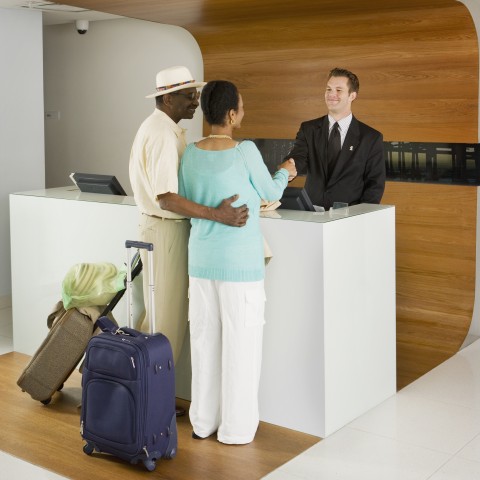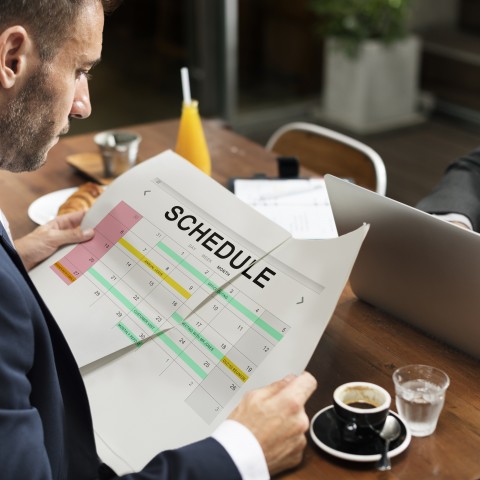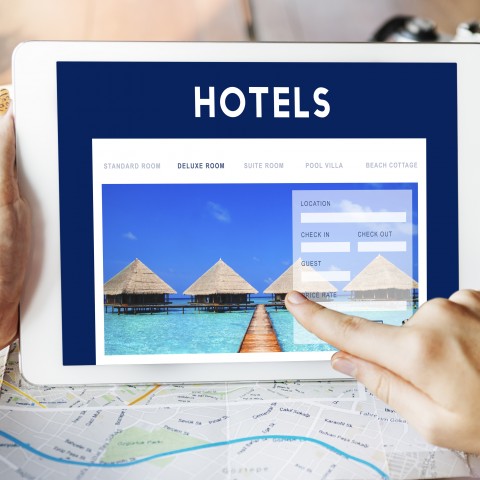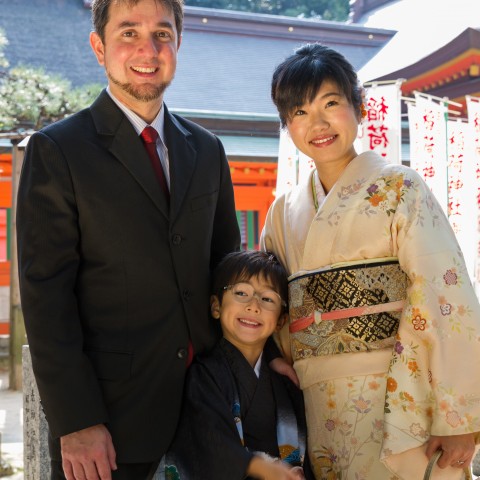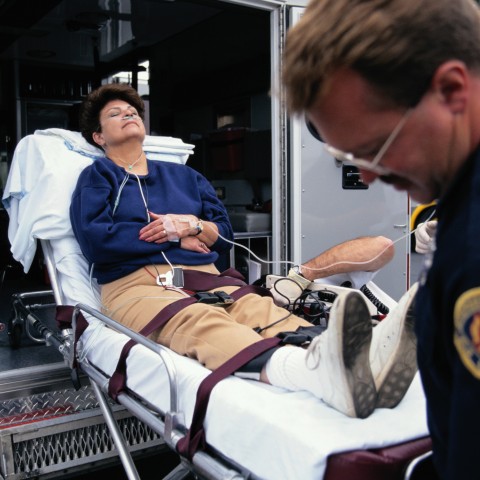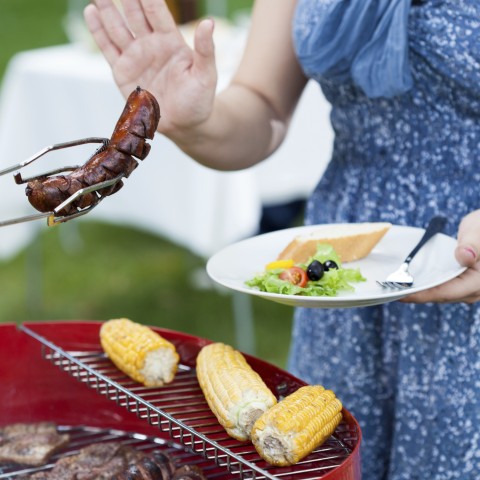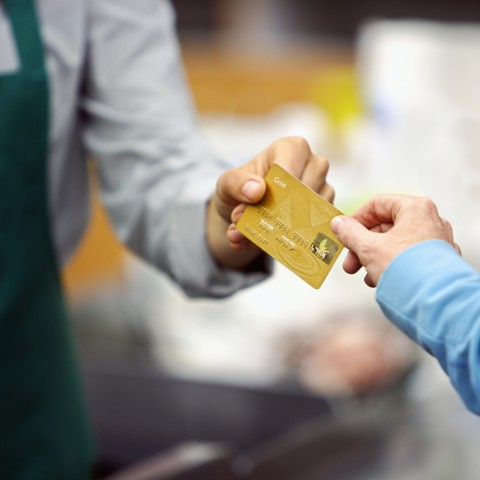
If you’ve read our articles on pronouns and how to tell time, you probably noticed a few verbs here and there. Maybe you even noticed some conjugations of verbs that you had never seen before.
Verbs are essential in mastering a language and communicating in it efficiently. Knowing verbs and how to use them will improve your understanding of Norwegian, both when listening and when speaking.
If you know the most common verbs in Norwegian, it will be easier for you to express yourself and join conversations.
In this article, we’ll cover the 100 most commonly used verbs in Norwegian. In addition to this Norwegian verbs list, we’ll briefly cover the irregular and regular verbs, simple conjugation, and present tense.
If you want to learn how to conjugate verbs and about the different verb groups, be sure to keep an eye out for our upcoming article on this topic.
Are you ready to add some essential Norwegian verbs to your growing vocabulary?
Let’s start!
 Table of Contents
Table of Contents
- The Norwegian Verbs and How They Work
- Action Verbs
- Norwegian Linking Verbs
- Norwegian Modal Verbs
- Making Sentences in Norwegian
- How NorwegianClass101 Can Help You Learn Even More Norwegian!

1. The Norwegian Verbs and How They Work

1 – Regular Verbs are Simple
In this article, we’ll briefly explain what regular and irregular verbs in Norwegian are and how they work. We won’t go into depth, though, as this deserves its own article.
Regular and irregular verbs are common in most languages. Very simply put, regular verbs follow the rules, while irregular verbs don’t.
Usually, the regular Norwegian verbs are put into four verb groups. Which group the verb is in depends on how it’s conjugated, meaning that the verb has a certain ending when conjugated.
The Norwegian regular verbs are grouped with the endings -et, -t, -d, and -dd.
Let’s take a quick look at a regular verb in Norwegian!
Å vaske (“to wash”) — This is the infinitive form.
Vask — This is the stem.
| 1st sg (I) | 2nd sg (you) | 3rd sg (she/he/it) | 1st pl (we) | 2nd pl (you) | 3rd pl (they) |
| Vask + er | Vask + er | Vask + er | Vask + er | Vask + er | Vask + er |
| Vasker | Vasker | Vasker | Vasker | Vasker | Vasker |
Keep in mind that this is only present tense. The verb will still follow a set of rules, but it will change in past tense and present perfect. For example, in past tense, 3rd sg (she) will get an -a ending instead of -et.
This is, however, going to be covered in our article about Norwegian conjugation!
2 – Irregular Verbs are Scary
The Norwegian language has around 300 irregular verbs. In addition to this, the irregular verbs have some grouping, sort of like regular verbs. These are, however, highly irregular, as one might expect.
In Norwegian schools, when learning irregular verbs, we’re normally advised to memorize the irregular verbs since there really are no rules to follow.
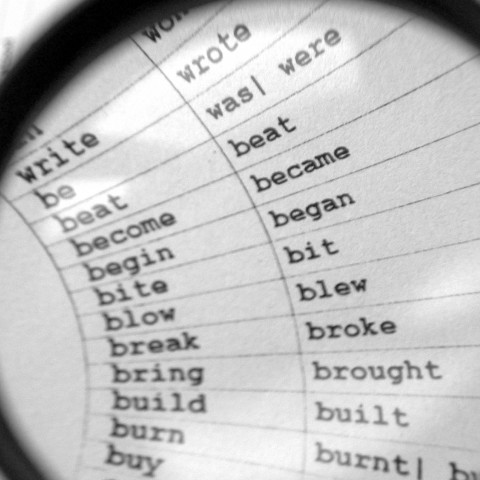
Let’s take a quick look at an irregular Norwegian verb as well.
- Å dø (“to die”) — This is the infinitive form.
Dø — This is the stem.
| 1st sg (I) | 2nd sg (you) | 3rd sg (she/he/it) | 1st pl (we) | 2nd pl (you) | 3rd pl (they) |
| Dø + r | Dø + r | Dø + r | Dø + r | Dø + r | Dø + r |
| Dør | Dør | Dør | Dør | Dør | Dør |
In present tense, it looks like the verb å dø has a pattern. However, when you look at the past tense and present perfect, the verb will suddenly look like this:
| Past Tense | Present Perfect |
| Døde | Dødd |
Instead of the regular ending of –et, å dø is getting -de and -dd instead.
And these endings aren’t a rule—many Norwegian irregular verbs will get other endings and completely change their sound. This is why they’re called irregular verbs.
3 – Don’t Worry About Verb Groups Yet!
In this article, we won’t cover the verb groups as this is too much information to put into one article! When learning a language like Norwegian, it’s important to take in a few things at a time so that you don’t get overwhelmed.
When you’ve started to build up your verb vocabulary, it will be easier to learn about the different groups and how they work.
Because of this, we’ll only cover the infinitive form for most of the verbs in this article.
4 – The Most Important Verbs in Norwegian
Before we start our list of 100+ common verbs in Norwegian, we need to cover two very important verbs that are used more than any other verbs in Norwegian.
1. “To be”
Like in English, “to be” is probably the most important and most-used verb in the Norwegian language. This is an irregular verb, as one might expect, and you need to memorize it.
| Infinitive | Preteritum | Presens futurum | Presens perfektum | Preteritum perfektum |
| Å være | Er | Var | Være | Vært |
| “To be” | “Am” | “Was” | “Be” | “Been” |
Examples
Jeg er norsk. “I am Norwegian.”
Jeg var i Norge. “I was in Norway.”
Du har vært i Norge. “You have been in Norway.”
2. “To have”
“To have” is the second most important and commonly used verb in Norwegian. As this is an auxiliary verb, it’s also irregular.
| Infinitive | Preteritum | Presens futurum | Presens perfektum | Preteritum perfektum |
| Å ha | Har | Hadde | Ha | Hatt |
| “To have” | “Have” | “Had” | “Have” | “Had” |
Examples
Jeg har to bøker. “I have two books.”
Jeg hadde dem i går. “I had them yesterday.”
Jeg har hatt det gøy! “I’ve had fun!”
When starting to learn Norwegian language verbs, these two are the most important ones to learn. Memorize them, and you’ll be able to express yourself a lot better than without them. Now that we’ve gone through the two most important verbs, let’s learn the rest!
2. Action Verbs

It’s important to note that verbs are classified differently. We have mental verbs, action verbs, linking verbs, and helping verbs. All of these have their own usage and place in the language.
Action verbs are verbs that express a physical or mental action. In this article, we’ve listed physical action verbs and mental action verbs separately, so you can recognize them easier!
We’ll start with the physical action verbs, which are some of the most useful Norwegian verbs to know as a beginner.
1 – Physical Action Verbs
1.
| Å gå “To go” “To walk” | Jeg vil ikke gå. “I don’t want to walk.” |
2.
| Å løpe “To run” | Jeg skal løpe. “I’m going to run.” |
3.
| Å kjøre “To drive” | Vi skal kjøre til Oslo. “We’re gonna drive to Oslo.” |
4.
| Å stå “To stand” | Vi må stå på bussen. “We have to stand in the bus.” |
5.
| Å sitte “To sit” | Vi kan sitte på bussen. “We can sit in the bus.” |
6.
| Å ligge “To lay” | Hunden skal ikke ligge i sengen. “The dog is not supposed to lay in the bed.” |
7.
| Å legge “To lay” “To put” | Kan jeg legge den her? “Can I lay/put this here?” |
8.
| Å sove “To sleep” | Det var vanskelig å sove igår, det var så mye bråk. “It was hard to sleep yesterday, there was so much noise.” |
9.
| Å danse “To dance” | Skal vi danse i morgen? “Are we going to dance tomorrow?” |
10.
| Å løpe “To run” | Jeg skal løpe. “I’m going to run.” |
11.
| Å trene “To workout” “To train” | Jeg skal trene. “I’m going to work out” Hunden må trene i morgen. “The dog has to train tomorrow.” |
12.
| Å jogge “To jog” | Hun skal jogge etterpå. “She’s gonna jog later.” |
13.
| Å fortelle “To tell” | Hysj, han skal fortelle en historie! “Hush, he’s gonna tell a story!” |
Note: Å fortelle is very often used when telling a story. In other conversations, it’s normal to use the verb å si when you want someone to tell you something or vice-versa.

14.
| Å si “To say” “To tell” | Kan jeg si deg noe? “Can I tell you something?” |
15.
| Å snakke “To talk” | Sjefen sa vi må snakke senere. “The boss said we have to talk later.” |
16.
| Å spørre “To ask” | Kan du spørre når vi skal til Bergen? “Can you ask when we’re going to Bergen?” |
17.
| Å le “To laugh” | Det er så lett å le sammen med deg! “It’s so easy to laugh with you!” |
18.
| Å tulle “To joke” “To be silly” | Jeg skal tulle litt med henne. “I’m going to joke a little with her.” |
Fun fact: Tulle can also be used as a pet name for a baby girl. Normally, this is said as ei lita tulle, which has no official translation, but is close to saying “a cute little (baby) girl.”
Example
For ei søt lita tulle du har! “What a cute little (baby) girl you have!”
19.
| Å skrike “To scream” | Babyen sluttetå skrike. “The baby stopped screaming.” |
Fun fact: In some places in Norway (like Molde), skrike can also mean “to cry.” This can be confusing for both Norwegians and foreigners!
20.
| Å avbryte “To interrupt” | Det er frekt å avbryte andre. “It’s rude to interrupt others.” |
21.
| Å skrive “To write” | Han liker å skrive historier. “He likes to write stories.” |
22.
| Å lese “To read” | Hun skal lese fem bøker. “She’s going to read five books.” |
23.
| Å spille “To play” “To act” “To gamble” “To record” | Kan han spille gitar? “Can he play the guitar?” |
24.
| Å planlegge “To plan” | Skal vi planlegge bursdagen? “Shall we plan the birthday?” |
25.
| Å ringe “To call” “To ring” | Han skal ringe på lørdag. “He’s gonna call on Saturday.” |
26.
| Å møte “To meet” | Hvor mange skal vi møte? “How many are we going to meet?” |
27.
| Å treffe “To meet” “To see” “To hit (a target)” | Hei, hyggelig å treffe deg. “Hi, nice to meet you.” |
28.
| Å hjelpe “To help” | Hun kan hjelpe deg. “She can help you.” |
29.
| Å flytte “To move” | Kan du flytte deg? “Can you move?” |
30.
| Å bo “To live (in a house/town/city)” | Han planlegger å bo i Norge. “He’s planning to live in Norway.” |
31.
| Å besøke “To visit” | Jeg skal besøke Norge. “I’m going to visit Norway.” |
32.
| Å reparere “To repair” | Hun skal reparere bilen. “She’s going to repair the car.” |
33.
| Å bygge “To build” | Vi vil bygge en god fremtid for barna. “We want to build a good future for the children.” |
34.
| Å hogge “To chop” | Jeg skal hogge ved. “I’m going to chop (fire)wood.” |
35.
| Å søke “To apply; seek; search” | Kan du søke på Google? “Can you search on Google?” |
36.
| Å ansette “To hire” | Jeg vil ansette henne. “I want to hire her.” |
37.
| Å jobbe “To work” | Jeg vil ikke jobbe i dag. “I don’t want to work today.” |
38.
| Å bære “To carry” | Kan du bære sekken? “Can you carry the backpack?” |
39.
| Å bistå “To assist” “To aid” | Jeg vil gjerne bistå deg. “I would like to assist you.” |
Note: In most of the cases where you can use bistå, you can also use the verb å hjelpe, which means “to help.”
40.
| Å holde “To hold” | Vil du holde katten? “Do you want to hold the cat?” |
41.
| Å motta “To receive” | Jeg vil gjerne motta prisen. “I would like to receive the prize.” |
42.
| Å velge “To choose” | Jeg klarer ikke velge mellom disse to. “I can’t choose between these two.” |
43.
| Å finne “To find” | Jeg klarte å finne telefonen! “I managed to find the phone!” |
44.
| Å putte/plassere “To put/place” | Kan du putte maten i kjøleskapet? “Can you put the food in the fridge?” |
Note: Putte and plassere mean the exact same thing: “to place” or “put.” Which one you use depends on what you prefer. Plassere is a more proper verb to use compared to putte, which can be more casual.
45.
| Å skaffe “To obtain” “To get” | Hun kan skaffe papirene. “She can obtain the papers.” |
46.
| Å få “To get” “To receive” | Jeg skal få en katt. “I’m gonna get a cat.” |
Note: Å få is also a modal verb!
47.
| Å anta “To assume” “To presume” | Jeg vil anta at han kommer fredag. “I would assume he comes on Friday.” |
48.
| Å se “To see” | Jeg ser deg. “I see you.” |
49.
| Å lage “To make” “To create” | Skal vi lage middag? “Shall we make dinner?” |
50.
| Å spise “To eat” | Han vil spise middag klokken syv. “He wants to eat dinner at seven o’clock.” |
51.
| Å drikke “To drink” | Hun vil ikke drikke på festen. “She doesn’t want to drink at the party.” |
Fun fact: In Norway, we often use å drikke as a way of saying “drinking alcohol” or “getting drunk.” If you’re asked Skal du drikke i kveld? meaning “Are you going to drink tonight?” you’re being asked if you’re planning on getting drunk.
52.
| Å prøve “To try” | Vi kan jo prøve. “We could try.” |
53.
| Å slippe “To let (go)” | Kan du slippe hunden? “Can you let go of the dog?” |
54.
| Å stoppe “To stop” | Bussen skal stoppe snart. “The bus will stop soon.” |
55.
| Å starte “To start” | Vi skal starte møtet snart. “We’re going to start the meeting soon.” |
56.
| Å forlate “To leave” | Vi vil forlate hotellet vårt. “We want to leave our hotel.” |
Note: In place of å forlate, you can also use the verb å dra.
57.
| Å dra “To leave” “To drag” “To go (somewhere)” | Vi vil dra fra hotellet vårt. “We want to leave our hotel.” Vi vil dra til hotellet vårt. “We want to go to our hotel.” |
58.
| Å forsvinne “To disappear” | Sokken kan jo ikke bare forsvinne? “The sock can’t just disappear?” |
59.
| Å ødelegge “To break” | Du kan ikke ødelegge denne. “You can’t break this.” |
60.
| Å fryse “To freeze” | Det er lett å fryse i Norge. “It’s easy to freeze in Norway.” |
61.
| Å brenne “To burn” | Det er lett å få bålet til å brenne. “It’s easy to make the campfire burn.” |
62.
| Å selge “To sell” | Jeg vil selge disse skoene. “I want to sell these shoes.” |
63.
| Å kjøpe “To buy” | Han vil kjøpe hus i Norge. “He wants to buy a house in Norway.” |
64.
| Å leve “To live” “To be alive” | Det er lett å leve! “It’s easy to live!” |
65.
| Å reise “To travel” “To raise” | Jeg vil reise til Norge. “I want to travel to Norway.” |
66.
| Å sende “To send” | Han skal sende en e-post. “He’s gonna send an email.” |
67.
| Å vise “To show” | Kan jeg vise deg noe? “Can I show you something?” |
68.
| Å åpne “To open” | Vil du åpne døra? “Do you want to open the door?” |
2 – Mental Verbs
69.
| Å vite “To know” | Jeg vet ikke. “I don’t know.” |
70.
| Å tenke “To think” | Det er vanskelig å tenke. “It’s hard to think.” |
71.
| Å ville “To want” | Nei, han ville ikke det. “No, he didn’t want that.” |
72.
| Å tro “To believe” | Mange velger å tro på Gud. “Many choose to believe in God.” |
73.
| Å forvente “To expect” | Du kan ikke forvente så mye. “You can’t expect that much.” |
74.
| Å forstå “To understand” | Hvem kan ikke forstå meg? “Who can’t understand me?” |
75.
| Å like “To like” | Hva er det å ikke like? “What’s not to like?” |
76.
| Å elske “To love” | Det er lett å elske deg. “It’s easy to love you.” |
77.
| Å huske “To remember” | Han kan ikke huske noe. “He can’t remember anything.” |
78.
| Å hate “To hate” | Du burde ikke hate andre mennesker. “You should not hate other people.” |
79.
| Å skjønne “To understand” | Det erlettere å skjønne når du blir eldre. “It’s easier to understand when you’re older.” |
80.
| Å ønske “To wish” | Mange kan ønske det samme. “Many can wish the same.” |
81.
| Å overraske “To surprise” | Hun valgte å overraske han! “She chose to surprise him!” |
82.
| Å føle “To feel” | Jeg kan føle det samme. “I can feel the same.” |
83.
| Å bekymre “To worry” | Du må ikke bekymre deg. “You don’t have to worry.” |
84.
| Å håpe “To hope” | Det er jo lov å håpe. “It’s allowed to hope.” |
84.
| Å lære “To learn” | Jeg vil lære norsk. “I want to learn Norwegian.” |
86.
| Å smake “To taste” | Hun vil ikke smake på middagen. “She doesn’t want to taste the dinner.” |
87.
| Å lukte “To smell” | Han kan ikke lukte noe. “He can’t smell anything.” |
88.
| Å høre “To hear” | Jeg kan høre deg. “I can hear you.” |
89.
| Å imponere “To impress” | Han gjorde det for å imponere deg. “He did it to impress you.” |
90.
| Å glemme “To forget” | Det er lett å glemme alle reglene. “It’s easy to forget all the rules.” |
3. Norwegian Linking Verbs
91.
| Å bli “To become” | Jeg vilbli veldig glad om du hjelper meg! “I will become very happy if you help me!” |
92.
| Å hete “To be called” “To be named” | Jeg vil ikke hete Irene! “I don’t want to be named Irene!” |
93.
| Å synes “To think (an opinion)” | Jeg synes at hun er veldigsnill. “I think she’s very nice.” |
94.
| Å kalle “To call (name)” “To be named” | Skal vi kalle katten Mons eller Moms? “Shall we call the cat Mons or Moms?” |

95.
| Å forekomme “To occur” | Det kan forekomme flere gode ting i disse situasjonene. “Multiple good things can occur in these situations.” |
96.
| Å virke “To seem” “To affect” | Det kan virke som at han er sur, men han er egentlig glad. “It can seem like he’s mad, but he’s actually happy.” |
97.
| Å døpes “To baptize” “To name” | Båten skal døpes til Fjorden. “The boat shall be named Fjorden.” |
4. Norwegian Modal Verbs
98.
| Vil “To want” | Jeg vil prate med henne. “I want to talk with her.” |
99.
| Skal “Shall/Should” | Han skal komme om to timer. “He should/shall come in two hours.” |
Note: The modal verb skal is one of the most commonly used verbs in Norwegian!
100.
| Å måtte “Must” “Have/Had to” | Jeg måtte rope så han kunne høre meg. “I had to yell so he could hear me.” |
101.
| Å la “To let” | Kan du la meg gå først? “Can you let me go first?” |
102.
| Å kunne “Could” “May” | Jeg kunne danse før. “I could dance before.” |
103.
| Burde “Should” | Han burde ha sagt ifra. “He should have said so.” |
104.
| Å ville “Will” (desire to do something) | Jeg vil prate med deg. “I want to talk with you.” |
5. Making Sentences in Norwegian

Now that you’ve learned many new verbs, you’re probably wondering where you place them in sentences.
Now, we’ll go briefly through the basic sentence structure in Norwegian. If you need a little refresher, you can look at our lesson on the Norwegian Basics.
The basic sentence structure in Norwegian is S + V + O.
However, two verbs are often placed next to each other. Further, sentences can be started in a number of different ways in Norwegian, but the verb is very often the second word.
1 – Examples

6. How NorwegianClass101 Can Help You Learn Even More Norwegian!
In this article, we went through the 100+ most common and important verbs in the Norwegian language. We also went through basic information on regular verbs, irregular verbs, verb groups, and of course the two most important verbs in Norwegian!
By now, you’ve learned the different types of Norwegian verbs so you can express yourself properly. Knowing these verbs will also make it easier for you to follow conversations.
At NorwegianClass101, we have even more articles that will help you become fluent in the Norwegian language! If you’re traveling in Norway, we have a great list for verbs to use when traveling. We also recommend reading our article on strategies for learning Norwegian grammar.
Like we’ve said, learning Norwegian verbs and sentence structure will help you immensely on your language-learning journey. Verbs are one of the most important things to learn when working towards total mastery!
But verbs are only one part of speech. For this reason, we have great articles on both nouns and adjectives that you can study as well. Combine your knowledge of verbs with this, and you’ll be making sentences on your own in no time.
NorwegianClass101 has materials for both beginners and advanced students, so no matter where you are in your learning curve, you’ll find something that can help you on your way to mastering the Norwegian language.
Before you go, let us know in the comments what you think about Norwegian verbs! Do you feel more confident now, or are you still struggling with something? To practice, write us a few sentences in the comments section using the new verbs you learned! 🙂 We look forward to hearing from you!

Jeg? Du? De? – Learn Pronouns in Norwegian

Pronouns play a large part in every language, and Norwegian is no exception. Learning the Norwegian pronouns can seem like a daunting task, especially as a beginner. But don’t worry! Pronouns in Norwegian are similar to those in English, and with some practice, you’ll quickly recognize them.
To be understood properly in Norwegian, it’s important to use the right pronouns. Keep in mind that Norwegian has three grammatical genders: male, female, and neutral. Sometimes certain pronouns will change depending on the gender of the object. How they change also depends on where in Norway you are.
If you’ve read our article on telling time in Norwegian, you already know, for example, that klokke/klokka, meaning “clock,” can be both feminine and masculine in gender. The one you use depends on where you are and who you’re speaking with. This isn’t something you have to worry too much about, especially as a beginner. You’ll learn to recognize the gender of a word with experience!
Further, Norwegian pronouns will also change according to the dialect that is spoken where you are. As you might already know, Norwegian has many dialects. Don’t worry though. It’s only the pronoun that changes, not the grammar. The pronoun “I” is the easiest to notice. Just take a look at how many ways you can say “I”: jeg, eg, æ, e, ej, je, jæ!
We’ll only cover the Norwegian Bokmål version here: jeg. But it’s still good to have some knowledge of all the different ones. Before we begin, also keep in mind that while using the correct pronouns is important, people can still understand you if you accidentally use the wrong one. It can be hard to memorize all of them, but as long as you practice, you’ll soon know them well.
In this article, you’ll learn how to use the correct Norwegian pronouns in sentences, and when talking.
Are you ready? 🙂
 Table of Contents
Table of Contents
- Norwegian Personal Pronouns
- Norwegian Demonstrative Pronouns
- Norwegian Interrogative Pronouns
- Norwegian Indefinite Pronouns
- How NorwegianClass101 Can Help You Learn Even More Norwegian!
1. Norwegian Personal Pronouns

If you’re just starting out, the personal pronouns are the easiest and most important to learn. They’re not that different from the English ones, which is a huge plus! You’ll use these the most, and if you refer to this article, you’ll sound like a native Norwegian in no time!
1- 1st-, 2nd-, and 3rd-Person Singular
Let’s start with the easiest one, which is jeg, meaning “I.” This is one of the most-used pronouns, and you’ll hear and see it often. It’s simple to say, and you can start so many sentences with it. Jeg is very often followed by a verb, as seen in the examples below.
Jeg “I”
Jeg går til butikken. “I’m walking to the shop.”
Jeg spiser mat. “I’m eating food.”
Du, or “you” in English, is another very short and simple pronoun. You’ll find that this goes for most of the pronouns, making them easy to memorize and learn. Like the pronoun jeg, du is often followed by a verb.
Du “You”
Hva spiser du? “What are you eating?”
Du går til butikken. “You’re going to the shop.”
Han, meaning “he” is used the same way as in English.
Han “He”
Han er hyggelig. “He is nice.”
Hva sier han? “What is he saying?”
The same goes for hun, meaning “she.”
Hun “She”
Hun liker mat. “She likes food.”
Hva sa hun? “What did she say?”
Now, the last third-person singular pronoun in Norwegian is den/det, meaning “it” in English. If a noun is masculine or feminine, den is used. If a noun is neutral, det will be used instead.
Den/Det “It”
Liker du den? (f/m) “Do you like it?”
Det er greit. (n) “It’s okay.”
2- 1st-, 2nd-, and 3rd-Person Plural
Good news! The plural personal pronouns are very similar to the English ones! Vi even sounds almost the same. Let’s take a look.
Vi “We”
Vi drar. “We are going.”
Vi skal spise. “We’re going to eat.”
De, meaning “they,” also sounds similar to its English counterpart, making it easy to learn.
De “They”
De vil ikke spise. “They don’t want to eat.”
De vil dra. “They want to go.”
The last one is dere, the equivalent of “you” (plural) in English.
Dere “You”
Dere sovnet tidlig i går. “You fell asleep early yesterday.”
Når dro dere? “When did you go?”
3- Object Form
Norwegian object pronouns, also called the object form, are used the same way as those in English. Easy, right?
Meg is the object form of “I.”
Meg “Me”
Han snakket til meg. “He talked to me.”
Hun elsker meg. “She loves me.”

Dem is the object form of “them.”
Dem “Them”
Han snakker med dem. “He is talking to them.”
Hun elsket dem. “She loved them.”
Last, we have the object form of “you.”
Deg “You”
Jeg elsker deg. “I love you.”
Han elsker deg. “He loves you.”
4- Possessive Forms
Now we’re entering into more advanced territory. Norwegian possessive pronouns can be tricky. In Norwegian, which possessive form you’re using depends on the gender of the object you’re talking about. If you remember what we wrote about Norwegian having three genders—male, female, and neutral—this makes sense. However, as we said, this takes practice and time, so don’t worry if you make a few mistakes along the way.
Let’s have a look at the possessive forms “my” and “mine.”
Min / Mi/ Mitt / Mine “My” / “Mine”
Here, the word bok, meaning “book,” is used in the example. Bok can be both a male and female object. The one you use depends on which one you prefer. Here you’ll see both, and their corresponding possessive forms.
Male
Min “My”
Gi meg boken min. “Give me my book.”
Female
Mi “My”
Gi meg boka mi. “Give me my book.”
Speil, meaning “mirror,” is a neutral word in Norwegian. If you look closely at the sentence below, you’ll notice that the word speil has an -et ending, meaning it’s neutral.
Neutral
Mitt “My”
Gi meg speilet mitt. “Give me my mirror.”
The Norwegian possessive form in the plural form is the same, no matter what gender the word is. It also has the same spelling as in English, although it’s pronounced differently.
Plural
Mine “My” / “Mine”
Gi meg bøkene mine. “Give me my books.”
Bøkene er mine. “The books are mine.”
The possessive forms of “your” and “yours” follow the same rules as those above.
Din /Di /Ditt / Dine “Your” / “Yours”
Male
Din “Your”
Gi meg boken din. “Give me your book.”
Female
Di “Your”
Gi meg boka di. “Give me your book.”
Neutral
Ditt “Your”
Gi meg speilet ditt. “Give me your mirror.”
Plural
Dine “Your” / “Yours”
Gi meg bøkene dine. “Give me your books.”
Dette er dine. “These are yours.”
Then there’s the possessive form of “their.” This possessive form doesn’t change based on gender, so it stays the same.
Deres “Their”
Kan du gi meg nummeret deres? “Can you give me their number?”
Dette er deres mat. “This is their food.”

The possessive form of “its,” “his,” and “hers” will change depending on the gender. First let’s take a look at “its,” which has two different possessive forms.
Dets / Dens “Its”
Dets is used when the noun is neutral. Dens is used when the noun is masculine or feminine.
MASCULINE / FEMININE
Dens arkitektur er vakker. “Its architecture is beautiful.”
NEUTRAL
Legg merke til universet og dets vakre farger. “Notice the universe and its beautiful colors.”
The possessive form “his” in Norwegian is simply the pronoun han, with an added s: hans.
Hans “His”
Øynene hans er grønne. “His eyes are green.”
The possessive form “her(s)” is a little different. Here we use the word hennes.
Hennes “Her(s)”
Øynene hennes er blå. “Her eyes are blue.”
5- Reflexive Forms
Now, let’s move onto Norwegian reflexive pronouns.
The reflexive form of “myself” is almost the same as the pronoun “me” in Norwegian. The only difference is that the word selv is added after, meaning “self.”
Meg selv “Myself”
Jeg har ansvar for meg selv. “I have a responsibility to myself.”
The reflexive form of “yourself” and “yourselves” follows the same structure. You simply use the word deg, which is the object form of “you,” and add selv after it. When it comes to “yourselves,” dere is used instead of deg.
Deg selv “Yourself”
Du må hjelpe deg selv. “You must help yourself.”
Dere selv “Yourselves”
Dere må hjelpe dere selv. “You must help yourselves.”
For the pronouns “himself,” “herself,” and “themselves,” only the word selv is used. This makes it very easy to learn!
Selv “Himself” / “Herself” / “Themselves”
Han/Hun/De må gjør det selv. “He/She/Them have to do it himself/herself/themselves.”
6- Vocabulary
Let’s look at all the pronouns together. Refer to this Norwegian pronouns table when you need some practice!
| Personal Pronouns (Singular) | |
| Jeg | “I” |
| Du | “You” |
| Han | “He” |
| Hun | “She” |
| Den/Det | “It” |
| Personal Pronouns (Plural) | |
| Vi | “We” |
| De | “They” |
| Dere | “You” |
| Object Forms | |
| Meg | “Me” |
| Dem | “Them” |
| Possessive Forms | |
| Min (Male) | “My” |
| Mi (Female) | “My” |
| Mitt (Neutral) | “My” |
| Mine (Plural) | “My” / “Mine” |
| Din (Male) | “Your” |
| Di (Female) | “Your” |
| Ditt (Neutral) | “Your” |
| Dine (Plural) | “Your” / “Yours” |
| Deres | “Their” |
| Meg selv | “Myself” |
| Selv | “Himself” / “Herself” / “Themselves” |
2. Norwegian Demonstrative Pronouns
Demonstrative pronouns are used to specify objects, as well as the distance to objects. Norwegian demonstrative pronouns work the same way as the English ones, so these are quite simple to learn!
1- This and That
In Norwegian, the word for “this” is dette / denne. You probably already know that this means we’ll change which one we use depending on the gender of the object. Dette / denne is used when an object is near.
Dette / Denne “This”
Denne (f/m) “This”
Ta denne boka/boken. “Take this book.”
Dette (neutral) “This”
Ta dette speilet. “Take this mirror.”

Dette er den jeg vil ha. (“This is the one I want.”)
“That” is very simple to learn if you know how to say “this!” The pronouns for “that” are pretty much just short versions of the above Norwegian pronouns. Den / det is used when something is further away.
Det / Den “That”
Den (f/m) “That”
Ta den boka/boken. “Take that book.”
Det (neutral) “That”
Det er et speil. “That is a mirror.”

2- These and Those
Disse, meaning “these,” is used when an object is near and in the plural form.
Disse “These”
Les disse bøkene. “Read these books.”
Can you guess what de means? De is used when an object is far away and in the plural form. You might also notice that de is the same pronoun as the personal pronoun “they.”
De “Those”
Les de bøkene. “Read those books.”
3- Here and There
“Here” and “there” are pretty self-explanatory. The Norwegian demonstrative pronouns for these are, again, very similar to the English ones.
Her “Here”
Bøkene er her. “The books are here.”
Der “There”
Bøkene er der. “The books are there.”
3. Norwegian Interrogative Pronouns
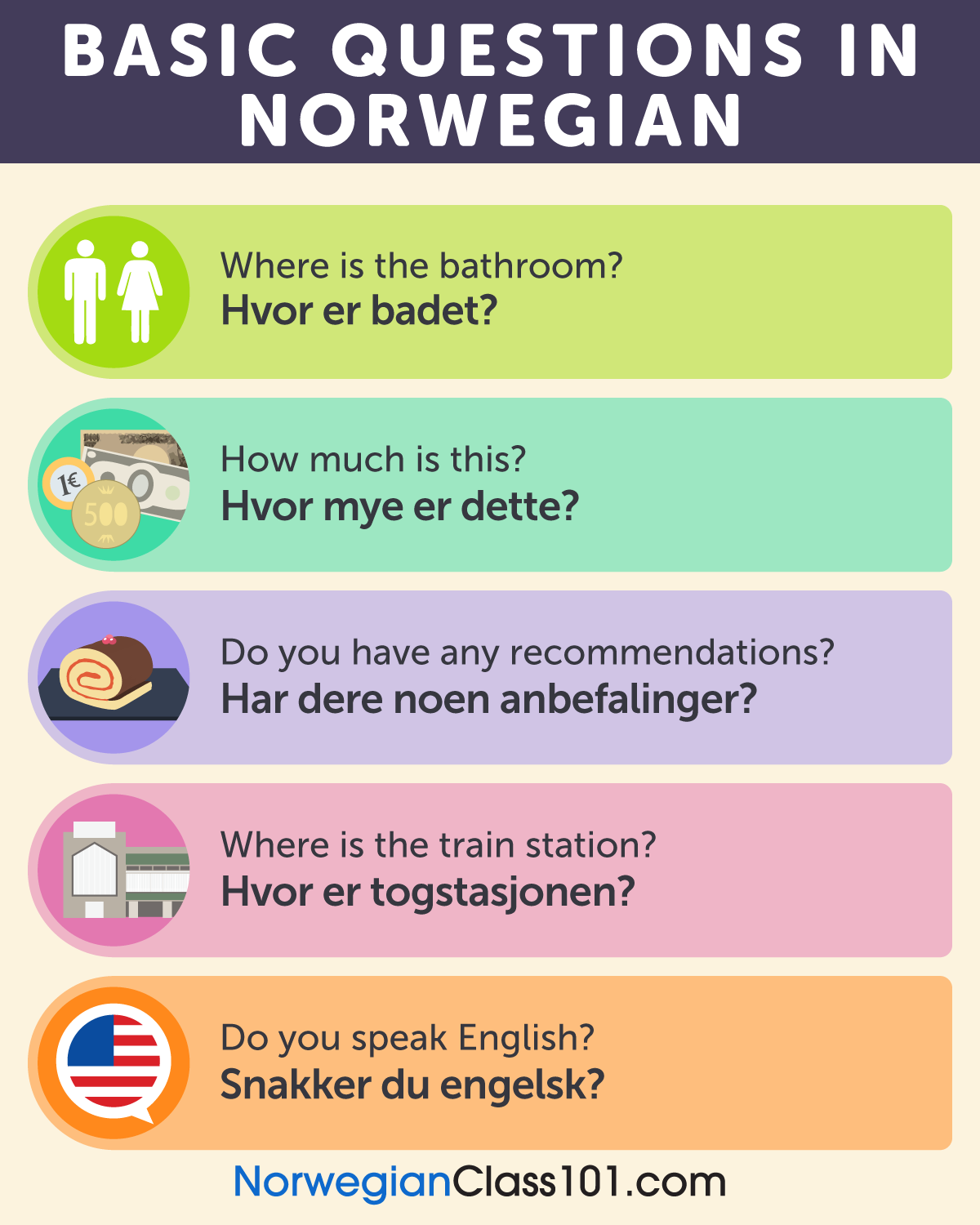
In the Norwegian language, interrogative pronouns are simply called spørreord, meaning “question words.” Again, they’re used in the same way as those in English. In most cases, the Norwegian interrogative pronouns are placed at the beginning of a sentence.
| Norwegian | English | Example | Example translation |
|---|---|---|---|
| Hva | “What” | Hva mener du? | “What do you mean?” |
| Hvorfor | “Why” | Hvorfor sa du det? | “Why did you say that?” |
| Hvilken | “Which” | Hvilken bok har du? | “Which book do you have?” |
| Hvem | “Who” / “Whom” | Hvem sa det? | “Who said that?” |
| Hvem (sine) | “Whose” | Hvem sine bøker er dette? | “Whose books are these?” |
| Hvor | “Where” | Hvor bor du? | “Where do you live?” |
| Hvordan | “How” | Hvordan gjør jeg dette? | “How do I do this?” |
| Når | “When” | Når kommer du hjem? | “When are you coming home?” |
4. Norwegian Indefinite Pronouns

When it comes to indefinite pronouns in Norwegian, it can get a little confusing. In English, most of the indefinite pronouns are just a word. Some of the Norwegian indefinite pronouns are actually phrases. We will, of course, give these some extra attention, so that you can understand what words they’re made up of!
First we have the indefinite pronouns “everyone” / “everybody.” The equivalent in Norwegian is alle sammen. But hang on, it’s not that easy.
Alle can actually mean “everyone” although the direct translation is “all.” Sammen means “together.” However, when someone is using “everyone” / “everybody,” the most common way is to say alle sammen. Alle is more often used when talking about objects, which you’ll see is also the case with the Norwegian indefinite pronoun for “everything.”
Alle sammen “Everyone” / “Everybody”
Kan alle sammen komme hit? “Can everyone/everybody come here?”
Now, let’s look at the indefinite pronoun “everywhere.” In Norwegian, this is overalt. Again, this pronoun is made up of two words. The first is over, which means “over.” The second part is alt, which means “everything.” Does it remind you of alle? That’s because it’s the same word, just conjugated.
Overalt “Everywhere”
Det er rotete overalt! “It’s messy everywhere!”
Considering what you just learned, the word for “everything” should be easy. As we said just above, “everything” in Norwegian is alt. It’s simply a direct translation from English! However, note that it’s very common to add the word sammen, meaning “together,” after it.
Alt (sammen) “Everything”
Du tok alt (sammen)! “You took everything!”
“Someone” / “Somebody” is easy to learn in Norwegian. It’s simply the pronoun noen.
Noen “Someone” / “Somebody”
Har noen en penn? “Does someone/somebody have a pen?”

The word for “somewhere” is a little more complicated again. There are two ways of saying “somewhere.” The shortest version is et sted, meaning “one place.” The longer way of saying it is et eller annet sted, meaning “some place or another.” Both are equally common to say, but et eller annet sted is often used when you really can’t find something and are frantically looking for it.
Et sted/et eller annet sted “Somewhere”
Den må være her et sted. “It has to be here somewhere.”
Den må være her et eller annet sted. “It has to be here somewhere.”
Let’s go from something complicated to something easier! “Something” is simply the word noe. As you can see, it’s very similar to the indefinite pronoun noen, meaning “someone.”
Noe “Something”
Jeg må fortelle deg noe. “I have to tell you something.”
“No one” / “Nobody” is another short and simple word in Norwegian.
Ingen “No one” / “Nobody”
Ingen ringte meg. “No one/Nobody called me.”
“Nowhere” isn’t a specific pronoun in Norwegian, but rather a sentence. Like “somewhere,” there are two ways you can say it. The most common one is Ikke noe sted, directly meaning “not a place.” A less common way is saying inget sted, meaning “no place.”
Ikke noe sted/Inget sted “Nowhere”
Jeg finner den ikke noe sted/inget sted. “It’s nowhere to be found.”
Ingenting means “nothing” in Norwegian. It means “no thing,” exactly like in English.
Ingenting “Nothing”
Vesken har ingenting innvendig. “The purse has nothing inside.”
“Anyone” / “Anybody” is noen in Norwegian. You might be a little confused since we just said noen means “someone” / “somebody.” While we agree it’s a little confusing, there’s really no explanation for this other than that it’s the same word in Norwegian! They’re even pronounced the same way. So it’s one less word you’ll have to practice! 🙂
Noen “Anyone” / “Anybody”
Kan noen fortelle meg hva som skjedde? “Can anyone/anybody tell me what happened?”
“Anywhere” is another sentence in Norwegian: hvor som helst. It doesn’t really have a direct translation to English; it simply means “anywhere.”
Hvor som helst “Anywhere”
Den kan være hvor som helst. “It can be anywhere.”
So what do you think “anything” is? Switch out the hvor with hva, and you have the answer! Hva som helst means “anything” in Norwegian. Again, it’s a sentence without any direct translation to English.
Hva som helst “Anything”
Gi meg hva som helst. “Give me anything.”
5. How NorwegianClass101 Can Help You Learn Even More Norwegian!
Learning Norwegian grammar can be hard, especially if you’re a beginner in the Norwegian language. Norwegian pronouns are easy to learn, but also complicated at times. Like most languages, there can be many rules to remember, but with time, it will get easier. Using good learning resources like NorwegianClass101 will make your Norwegian learning experience a lot easier.
By learning the Norwegian language pronouns, Norwegian possessive forms, and Norwegian indefinite pronouns, you’ll soon learn how to speak like a native. Sounding natural in Norwegian takes dedication and work, but it’s definitely possible!
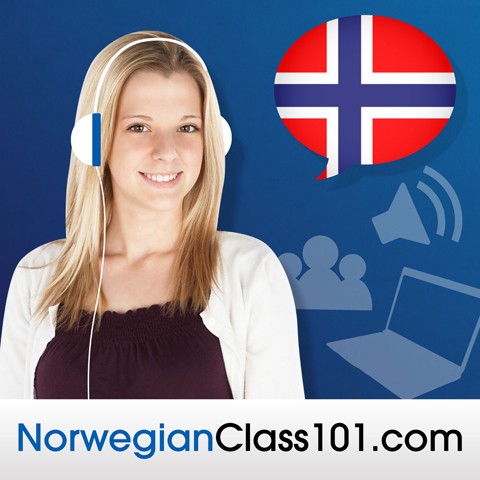
You can also check out NorwegianClass101 if you want to learn more Norwegian. Here, you can find in-depth articles and vocabulary lists, such as our Most Useful Norwegian Pronouns list! If you’re a beginner, there’s also great information on both Norwegian nouns and the most common Norwegian adjectives. Maybe you need to learn more about Norwegian sentence structure before you can learn the pronouns? Or maybe you want to have an in-depth look at how to tell time or introduce yourself before going further?
NorwegianClass101 has articles and lessons for both beginners and advanced learners, so no matter where you are in your learning curve, you’ll find something that can help you on your way to mastering the Norwegian language.
Before you go, let us know in the comments what you think about the different pronouns! Do you feel more confident now, or are you still struggling with something? To practice, write us a few sentences using different Norwegian pronouns in the comments. 🙂 We look forward to hearing from you!

Hva er klokka? – Learn Norwegian Time-Telling

Being able to tell time is an important part of learning a new language. It helps you both when conversing with others as well as when planning events, meetings, or other activities. On top of this, it also gives you a great opportunity to use your prior knowledge of numbers and simple sentence structure.
Are you often late? If you are, make sure you’re on time in Norway! Being on time in Norwegian culture is important. Arriving late is considered rude, and in Norway, it’s important to respect each other’s time. If you arrive late, without notice, it will seem like you don’t respect them or their time.
Keep in mind that if a specific time isn’t set, for example “around eight,” Norwegians generally don’t care when you arrive. That is, if you arrive within one or two hours after.

Norway uses the time zone GMT +2 in the summer, and GMT +1 in the winter. “Daylight Saving Time” is called Sommertid, meaning “Summertime.” Sommertid starts in March and ends in October.
In Norway, the twenty-four-hour clock, also called military time, is used. If someone uses the 12-hour clock, they don’t say “A.M.” or “P.M.” – instead, Norwegians know what time someone’s referring to based on the time of day. If this isn’t clear, it’s normal to ask På kvelden eller morgenen? meaning “At night or morning?” This can be confusing at first, but luckily it means that you can use the same phrases for both day and night!
To learn how to tell the time in Norwegian, the only prior knowledge you should have is how to count from 1-60. However, you could get away with only knowing the numbers 1-12. Even if you’ve just started learning Norwegian, or are brushing up on some knowledge, this is a very simple system and you should learn it in no time using this article!
 Table of Contents
Table of Contents
- What Time is it?
- Hour and O’Clock
- Minutes
- Hours Divided into Minutes
- General Time Reference of the Day
- Time Adverbs
- Time Proverbs and Sayings
- How NorwegianClass101 Can Help You Learn Even More Norwegian!
1. What Time is it?

Before you can tell time in Norwegian, you need to know how to ask about time and how to recognize when you’re being asked about time in Norwegian. Norwegian has two ways of asking for the time and they both mean the same thing. There’s no formal way of asking this question; they’re both polite.
Hva er klokka? “What time is it?”
Hvor mye er klokka? “What time is it?”
Hva er klokka? literally means “What is the clock?” and Hvor mye er klokka? means “How much is the clock?” This might seem a little strange in English, but as shown above, they both mean “What time is it?”
Please keep in mind that klokka can also be pronounced or written as klokken. Which one is used depends on if the person has a dialect or not.
1 – Do you have the time please?
Here’s a very similar way of asking for the time in Norwegian. The only difference is that the word unnskyld, meaning “excuse me” and/or “sorry” is placed in front of the question to make it more polite.
Unnskyld, hvor mye er klokka? “Excuse me, what time is it?”
Unnskyld, vet du hvor mye klokka er? “Excuse me, do you know what time it is?”

How to Answer
Now that you know how to ask for the time in Norwegian, let’s take a look at how you can answer. As always, there are many ways of answering this question. We’ll go through the most common ones.
As a rule, you should always use the proper answer when learning Norwegian. As you learn more and become more confident in your Norwegian language skills, you can start using the other phrases to sound more natural.
As mentioned earlier, when asking about the time in Norwegian, you actually ask “What is the clock?” In Norwegian, the word for “time” isn’t used the same way as in English when telling or asking about time. Instead, the word klokka, meaning “clock,” is used.
Let’s have a look at the most proper way of answering:
Q: Hva er klokka? “What time is it?”
A: Klokka er 5. “The time is 5 p.m.”
The above example is also the most common and polite way to answer the question.
There are two other ways of answering when asked about the time in Norwegian. These are shorter, and are commonly used among friends and family. This way of answering is more casual, but it’s still not considered rude. They’re just simply less polite.
Q: Hva er klokka? “What time is it?”
Q: Den er 5. “It’s 5 p.m.”
Q: Hva er klokka? “What time is it?”
Q: 5. “5 p.m.”
2 – What time is the ___?
As mentioned, an important reason for knowing how to tell time in Norwegian and ask for it is for planning. This can be for events, meetings, and other things that are going to happen.
There are two ways to ask when something is in Norwegian. Again, one is a longer version and the other is a shorter version.
Hvilken tid er [møtet]? “What time is the [meeting]?”
This one can seem a little confusing if you’re familiar with the Norwegian adjectives. Hvilken does, in fact, mean “which” in English, but is at times used as “what.” The more you learn about the Norwegian language, the more natural this will become and you’ll know when to use it. But for now, don’t worry about it! Just be aware that it’s used in this setting.
Hvilken tid er møte? is the most polite way of asking. It’s generally used less often than the shorter version below, simply because it’s longer.
Når er [møtet]? “When is the [meeting]?”
See why this is more commonly used? It means the same thing, even if the word “time” isn’t included. It’s more simple to say, and it gets the same message across. Norwegians love their shorter sentences, so this sounds very natural in Norwegian.
In the above examples, the word “meeting” was used as an example. But not everyone is in Norway for meetings. Take a look at the list below to practice for other situations where you might need to know the time.
Hvilken tid er festen? “What time is the party?”
Hvilken tid er timen? “What time is the class?”
Hvilken tid er middagen? “What time is the dinner?”
Hvilken tid er treningen? “What time is the training?”
Hvilken tid er bryllupet? “What time is the wedding?”
Hvilken tid er avreise? “What time is the departure?”

How to Answer
Answering these questions is nearly identical to answering what the time is in Norwegian. The only difference is that you’ll switch out the word klokka with what you’re being asked about.
Q: Hvilken tid er middagen? “What time is the dinner?”
A: Middagen er 5. “The dinner is at 5 p.m.”
Q: Når er møtet? “When is the meeting?”
A: Møtet er 5. “The meeting is at 5 p.m.”
You can alternatively say Møtet er klokken 5, meaning “The meeting is at 5 o’clock,” but this isn’t very common.
As you might already have guessed, the three other ways of answering are actually the exact same as how you would answer when asked what the time is in Norwegian. The only difference is that the pronoun changes depending on what event or situation you’re mentioning.
When answering what the time is, notice how you’re answering with Den, as in Den er 17. When you’re answering when a meeting is, this pronoun will change to Det.
Q: Når er møte? “When is the meeting?”
A: Det er 5. “It’s at 5 p.m.”
Q: Når er festen? “When is the party?”
A: Den er 5. “It’s at 5 p.m.”
As for the last way of answering, this one is the same.
Q: Når er møte? “When is the meeting?”
A: 5. “5 p.m.”
2. Hour and O’Clock

We briefly mentioned this earlier, but it’s important to remember that Norwegians use the twenty-four-hour clock. In the beginning, this can seem confusing, but if you know the numbers, it should be easy to learn!
An important thing to note is that when telling time in Norwegian, “1” is actually written and pronounced ett instead of en.
1 – Hours
Using the twenty-four-hour clock means that Norwegians have two ways of saying the time.
Q: Hva er klokka? “What time is it?”
A1: Klokka er fem. “It’s 5 p.m.”
A2: Klokka er sytten. “It’s 5 p.m.”
Confused? No worries. When someone is telling you the time in Norwegian, you can both get 17 or 5 as an answer if the clock is 5 p.m. Both are right, and which one is used depends on the person answering. We’ll take a look at all the hours so that you can learn this!
In Norwegian, the word “o’clock” isn’t used; however, there is a Norwegian equivalent. This equivalent is hel, which in English means “whole.” Keep in mind that while Norwegians use this word, it’s not used together with a number. When hel is used, it’s used as its own answer. Hel is used when the speaker assumes you know what time it is.
Q: Hva er klokka? “What time is it?”
A: Den er hel. “It’s on the hour.”
Look weird? That’s because it sort of is.
Let’s say you’re hanging out with a friend. You have to leave at 18:30, and the last time you had a look at the clock it was 17:40. After a while, you decide to ask your friend what time it is. He assumes you have knowledge that the clock is around or soon 18:00. He then answers Den er hel, meaning “On the hour.” He doesn’t specify what actual time it is, but is assuming that you know.
This is a very common answer to get in Norwegian.
“Hour” in Norwegian is time. This is used when talking about lengths of time.
Now that you understand some of the basics of how the Norwegian clock system works, let’s go through the hours! The chart below will not only show you what each hour is called, but will also teach you how to write time in Norwegian.
| Norwegian (A.M.) | English (A.M.) | Norwegian (P.M.) | English (P.M.) |
|---|---|---|---|
| 00.00 Midnatt | Midnight | 12.00 Klokka tolv | 12 p.m. |
| 01.00 Klokka ett | 1 a.m. | 13.00 Klokka ett | 1 p.m. |
| 02.00 Klokka to | 2 a.m. | 14.00 Klokka to | 2 p.m. |
| 03.00 Klokka tre | 3 a.m. | 15.00 Klokka tre | 3 p.m. |
| 04.00 Klokka fire | 4 a.m. | 16.00 Klokka fire | 4 p.m. |
| 05.00 Klokka fem | 5 a.m. | 17.00 Klokka fem | 5 p.m. |
| 06.00 Klokka seks | 6 a.m. | 18:00 Klokka seks | 6 p.m. |
| 07.00 Klokka sju | 7 a.m. | 19:00 Klokka sju | 7 p.m. |
| 08.00 Klokka åtte | 8 a.m. | 20.00 Klokka åtte | 8 p.m. |
| 09.00 Klokka ni | 9 a.m. | 21.00 Klokka ni | 9 p.m. |
| 10.00 Klokka ti | 10 a.m. | 22:00 Klokka ti | 10 p.m. |
| 11.00 Klokka elleve | 11 a.m. | 23.00 Klokka elleve | 11 p.m. |
As mentioned earlier, Norwegians often answer the time in two different ways. For example, when the time is 11 p.m., you can choose if you want to say tjuetre (23) or elleve (11). Both are correct and both will be understood. If you want to be clear that something is happening at 11 p.m. and not 11 a.m., you should say tjuetre so that it’s understood that it’s in the evening.
2 – Using hours in a sentence
Now that you know how to say all the hours in the day, let’s put this new knowledge into a sentence!
Jeg har norsktime klokka ni. “I have the Norwegian lesson at 9 a.m./p.m.”
Jeg har norsktime tjueen. “I have the Norwegian lesson at 9 p.m.”

Notice how when saying 21 (tjueen), we omit the word klokka. Also notice that you can say ni for both 9 a.m. and p.m. Usually, the people you talk to will understand whether it’s in the evening or morning based on what the subject is and the current time. However, if you want to be very clear, the safest bet is to say tjueen instead of ni if you’re referring to the evening.
Q: Hva er klokka? “What time is it?”
A: Den er nitten. “It’s 7 p.m.”
Q: Hva er klokka? “What time is it?”
A: Den er syv. “It’s 7 a.m./p.m.”
Q: Hva er klokka? “What time is it?”
A: Nitten. “It’s 7 p.m.”
3. Minutes
So far we’ve only gone through how to tell the time in Norwegian when it’s a round number, or “o’clock.” Now we’ll take a look at minutes and how to add minutes to the hour. With the knowledge you’ve gained so far in this article, this should be easy!
“Minute” and “minutes” in Norwegian are spelled similarly to how they are in English.
Minutt “Minute”
Minutter “Minutes”
Vi drar om ett minutt. “We’re going in one minute.”
Vi drar om to minutter. “We’re going in two minutes.”
Adding -er to minutt makes it plural. This applies to a lot of other words as well, so make a mental note for the future!
When telling time in Norwegian and adding minutes, the minutes are always added first. Normally, the word minutt or minutter isn’t added, but again, this depends on what you or the person you’re talking to prefers. We’ll show you both ways in the examples below. The examples will also have the direct translations so that you can understand how the sentences are structured.
16:23 (4:23 p.m.)
Klokka er sju på halv fem. “The time is seven to half five.”
Klokka er tjuetre over fire. “The time is twenty-three over four.”
16:23 (4:23 p.m.)
Klokka er sju minutter på halv fem. “The time is seven minutes to half five.”
Klokka er tjuetre minutter over fire. “The time is twenty-three minutes over four.”
There are no particular rules for which one to use, as these all mean the same thing: 16:23. However, most people would say Klokka er sju på halv fem, since this is the easiest.
Now let’s take a look at how to say when a time is “five minutes past” and “five minutes over” in Norwegian.
16:25 (4:25 p.m.)
Klokka er fem på halv fem. “The time is five to half five.”
Klokka er fem minutter på halv fem. “The time is five minutes to half five.”
16:35 (4:35 p.m.)
Klokka er fem over halv fem. “The time is five over half five.”
Klokka er fem minutter over halv fem. “The time is five minutes over half five.”
Since this is Norwegian, again, we can make the sentences shorter! This is almost always used when talking with friends and family. Here, we also have some of the assumptions that you, or the one asking, has some knowledge about what time it was earlier since the actual hour isn’t mentioned.
Q: Hva er klokka? “What time is it?”
A: Fem (minutter) over halv. “Five (minutes) past half.”
Q: Hva er klokka? “What time is it?”
A: Fem (minutter) på halv. “Five (minutes) to half.”
1 – Seconds
So what comes after minutes? Seconds. Or in Norwegian: Sekunder!
Sekund “Second”
Sekunder “Seconds”
Gi meg ett sekund! “Give me a second!”
Gi meg to sekunder! “Give me two seconds!”
4. Hours Divided into Minutes
Now that you have knowledge about how the sentences are structured when asking and telling time in Norwegian, we can take a look at how Norwegian works when we’re dividing the hour into minutes.
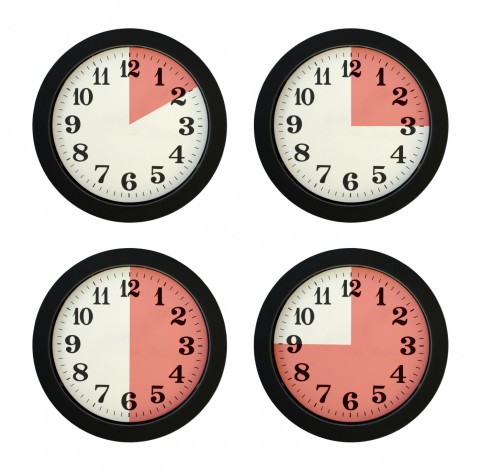
1 – Half
As you might have noticed from the examples above, where the examples were directly translated, Norwegians say “half past” differently than in English. Instead, Norwegians simply say “half” followed by the next hour.
13:30
Klokka er halv to. “The time is half past one.”
This is the correct translation over to English. However, in Norwegian, we’re actually saying “The time is half two.” Below are two examples that are directly translated into English.
14:30
Klokka er halv tre. “The time is half three.”
15:30
Klokka er halv fire. “The time is half four.”
2 – Quarter
Telling time in quarters is the same in Norwegian as in English!
13:45
Klokka er kvart på to. “The time is a quarter to two o’clock.”
13:15
Klokka er kvart over to. “The time is a quarter past two o’clock.”
You can also say Femten minutter over, meaning “Fifteen minutes over” and Femten minutter på, meaning “Fifteen minutes to.” However, Kvart på is used most often.
3 – A third
We already had a look at thirds when talking about minutes. Thirds use the exact same structure as when you’re telling minutes in Norwegian.
14:07
Syv (minutter) over to “Seven (minutes) past two”
13:53
Syv (minutter) på to “Seven (minutes) to two”
Femtitre “Fifty-three (minutes)”
When you’re asking about time and the clock is after XX:30, you can either get the actual number (like 53) or the minutes until “o’clock.” Both are correct and frequently used.
Below are some more examples of how to say different hours so that you can practice and figure out which way you prefer!
13:30
Klokka er halv to. “The time is half past one.”
Halv to “Half past one”
Halv “Half”
13:45
Klokka er kvart på to. “The time is a quarter to two.”
Kvart på to “Quarter to two”
Kvart på “Quarter”
13:40
Klokka er ti over halv to. “The time is twenty past one.”
Ti over halv to “Twenty past one”
Ti over halv “Twenty past”
13:02
Klokka er to over ett. “The time is two past one.”
To over ett “Two past one”
To over “Two past”
13:12
Klokka er tolv over ett. “The time is twelve past one.”
Tolv over ett “Twelve past one”
Tolv over “Twelve past”
13:52
Klokka er åtte på ett. “The time is eight to one.”
Åtte på ett “Eight to one”
Åtte på “Eight (to)”
Klokka er femtito. “The time is fifty-two”
Femtito “Fifty-two”
5. General Time Reference of the Day

As mentioned multiple times before, in Norway p.m. and a.m. aren’t used. It’s assumed that you know what time of day it is, and what time of the day people are referring to. If you’re unsure, it’s very useful to know the words for points of time throughout the day. This way, you can always ask På kvelden eller dagen?, meaning “In the evening or day?”
1 – Words for time reference of the day
Morgen “Morning”
Soloppgang “Sunrise”
Formiddag “Noon”
Dagtid “Daytime”
Tidlig ettermiddag “Early afternoon”
Ettermiddag “Afternoon”
Kveld “Evening”
Solnedgang “Sunset”
Natt “Night”
Midnatt “Midnight”
2 – When time references of the day are used
So, let’s look at what time period is referenced when these words are used. Note that this does depend on the person and is more of a general idea of what to expect.
Morning 05 to 09 (5 a.m. – 9 a.m.)
Noon 09 to 12 (9 a.m. – 12 p.m.)
Daytime 09 to 19 (9 a.m. – 7 p.m.)
Early afternoon 13 to 15 (1 p.m. – 3 p.m.)
Afternoon 15 to 18 (3 p.m. – 6 p.m.)
Evening 18 to 23 (6 p.m. – 11 p.m.)
Night 00 to 04 (12 a.m. – 4 a.m.)
Midnight 00 (Midnight)
No one is going to raise an eyebrow if you say “night” when it’s 05. It’s a running joke to often say the wrong word, for example, God Kveld! meaning “good evening,” when it’s actually afternoon or morning.
6. Time Adverbs

When you’re telling time in Norwegian, and especially when planning something or talking about when something is going to happen, it’s very useful to know time adverbs. This will also make your Norwegian sound a lot more natural.
1 – Adverbs in sentences
| English | Norwegian |
|---|---|
| Right now | Akkurat (nå)/nå Jeg sto akkurat opp. Jeg sto opp akkurat nå. “I just woke up.” “I just woke up right now.” |
| Currently | For tiden Hva jobber du med for tiden? “What are you currently working with?” |
| Meanwhile | I mellomtiden / I mens Jeg venter her i mellomtiden, Jeg venter her imens “I’ll wait here in the meanwhile.” |
| At the same time | Samtidig Vi drar samtidig “We go at the same time.” |
| Before | Før Kom før klokka fem. “Come before five.” |
| After | Etter Kom etter klokka fem. “Come after five.” |
| Soon | Snart Jeg kommer snart. “I’m coming soon.” |
| Almost | Nesten Jeg var nesten til tide. “I was almost on time.” |
| In a little while | Om en liten stund Jeg kommer om en liten stund. “I’ll come in a little while.” |
| For a long time | (På) Lenge Jeg har ikke sett deg på lenge. “I haven’t seen you for a long time.” |
| Anytime | Når som helst Du kan komme når som helst. “You can come anytime.” |
| As soon as possible | Så raskt / Fort som mulig Kan du gi meg pengene tilbake så fort som mulig? “Can you give me the money back as soon as possible?” |
7. Time Proverbs and Sayings
Norwegian has many proverbs and sayings. They’re used quite commonly, but less frequently among younger people. Usually they’re used more as a joke and in a sarcastic way when younger people use them. However, among older people, and especially the elderly, you’ll definitely hear a lot of proverbs and sayings about time.
1 – Common proverbs and sayings
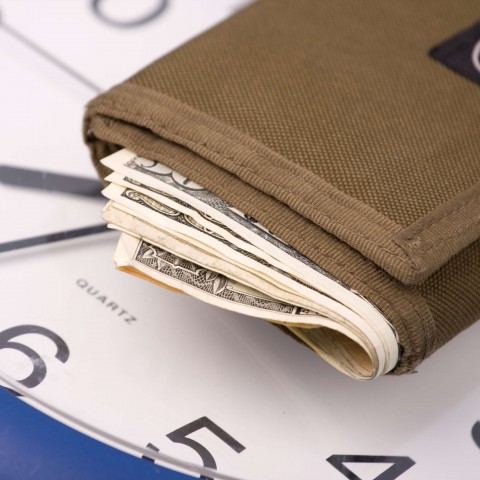
Here are some of the most commonly used proverbs and sayings about time.
Time is money. Tid er penger.
Time flies. Tiden flyr.
An inch of gold will not buy an inch of time. Tid kan ikke kjøpes.
Time heals all wounds. Tiden leger alle sår.
Better late than never. Bedre sent enn aldri.
2 – Sayings in dialects and Bokmål
A lot of Norwegian sayings are in dialect, as Norway has hundreds of different dialects. A longer Norwegian equivalent of “Time flies” is below so you can take a look at both the dialect version and the Bokmål version!
| English | “Time flies, you don’t know where it went, suddenly it’s gone.” |
| Bokmål | Tiden flyr, du vet ikke hvor det blir av den, plutselig er den borte. |
| Dialect | Tida flyr, du veit ikke hvor det blir av han, plutselig er han borte. |
8. How NorwegianClass101 Can Help You Learn Even More Norwegian!
As mentioned many times in this article, there are many different ways of both asking and telling time in Norwegian. Which way you want to ask and tell time is completely up to you. Maybe you want to sound like a natural and casual Norwegian; maybe you want to practice your pronunciation; or maybe you want to use the proper and polite ways of asking and telling time.
Hopefully, this article has given you some ideas on how you want to sound and present yourself when speaking Norwegian.
Telling the time in Norwegian is something that’s very important, especially if you’re living in Norway and want to interact with the Norwegian communities. To both know the current Norwegian time and how to ask for it is a great conversation starter, and very useful when planning events and other activities.
You can also check out NorwegianClass101 if you want to learn more Norwegian. Here, you can find in-depth articles that will help you on your way to learning the Norwegian language. Maybe you need to learn more about numbers to tell time? Then feel free to check out our video on the numeric system in Norwegian. This will help you in many other ways, including telling time in Norwegian.
NorwegianClass101 has articles for both beginners and advanced users, so no matter where you are in your learning curve, you’ll find something that can help you on your way to mastering the Norwegian language.
Before you go, let us know in the comments how you feel about asking about and telling the time in Norwegian! Do you feel more confident now, or are you still struggling with something? To practice, write us a few questions and answers about time in the Norwegian language in the comments. 🙂 We look forward to hearing from you!

Essential Vocabulary for Life Events in Norwegian
What is the most defining moment you will face this year? From memories that you immortalize in a million photographs, to days you never wish to remember, one thing’s for certain: big life events change you. The great poet, Bukowski, said, “We are here to laugh at the odds and live our lives so well, that death will tremble to take us.” The older I get, the more I agree with him!
Talking about significant events in our lives is part of every person’s journey, regardless of creed or culture. If you’re planning to stay in Norway for more than a quick visit, you’re sure to need at least a few ‘life events’ phrases that you can use. After all, many of these are shared experiences, and it’s generally expected that we will show up with good manners and warm wishes.

Table of Contents
1. Life Events
Do you know how to say “Happy New Year” in Norwegian? Well, the New Year is a pretty big deal that the whole world is in on! We celebrate until midnight, make mindful resolutions, and fill the night sky with the same happy words in hundreds of languages. No doubt, then, that you’ll want to know how to say it like a local!
Big life events are not all about fun times, though. Real life happens even when you’re traveling, and certain terminology will be very helpful to know. From talking about your new job to wishing your neighbors “Merry Christmas” in Norwegian, here at NorwegianClass101, we’ve put together just the right vocabulary and phrases for you.
1- Birthday – bursdag
If you’re like me, any excuse to bring out a pen and scribble a note is a good one. When there’s a birthday, even better: hello, handwriting!
Your Norwegian friend will love hearing you wish them a “Happy birthday” in Norwegian, but how much more will they appreciate a thoughtful written message? Whether you write it on their Facebook wall or buy a cute card, your effort in Norwegian is sure to get them smiling! Write it like this:
Gratulerer med dagen
Now that you know the words, I challenge you to put them to music and sing your own “Happy birthday” song in Norwegian! It’s not impossible to figure out even more lyrics, once you start discovering the language from scratch.
2- Buy – kjøpe
If there’s a special occasion, you might want to buy somebody a gift. As long as you’ve checked out Norwegian etiquette on gift-giving (do a Google search for this!), it will be a lovely gesture. If you’re not sure what to buy, how about the awesome and universally-appealing gift of language? That’s a gift that won’t stop giving!
3- Retire – pensjonere seg
If you’re planning to expand your mind and retire in Norway, you can use this word to tell people why you seem to be on a perpetual vacation!
Retirement is also a great time to learn a new language, don’t you think? And you don’t have to do it alone! These days it’s possible to connect to a vibrant learning community at the click of a button. The added benefit of a Daily Dose of Language is that it keeps your brain cells alive and curious about the world. After all, it’s never too late to realize those long-ignored dreams of traveling the globe…
4- Graduation – avgangseksamen
When attending a graduation ceremony in Norway, be prepared for a lot of formal language! It will be a great opportunity to listen carefully and see if you can pick up differences from the everyday Norwegian you hear.
5- Promotion – forfremmelse
Next to vacation time, receiving a promotion is the one career highlight almost everyone looks forward to. And why wouldn’t you? Sure, it means more responsibility, but it also means more money and benefits and – the part I love most – a change of scenery! Even something as simple as looking out a new office window would boost my mood.
6- Anniversary – jubileum
Some anniversaries we anticipate with excitement, others with apprehension. They are days marking significant events in our lives that can be shared with just one person, or with a whole nation. Whether it’s a special day for you and a loved one, or for someone else you know, this word is crucial to know if you want to wish them a happy anniversary in Norwegian.
7- Funeral – begravelse
We tend to be uncomfortable talking about funerals in the west, but it’s an important conversation for families to have. Around the world, there are many different customs and rituals for saying goodbye to deceased loved ones – some vastly different to our own. When traveling in Norway, if you happen to find yourself the unwitting observer of a funeral, take a quiet moment to appreciate the cultural ethos; even this can be an enriching experience for you.
8- Travel – å reise
Travel – my favorite thing to do! Everything about the experience is thrilling and the best cure for boredom, depression, and uncertainty about your future. You will surely be forever changed, fellow traveler! But you already know this, don’t you? Well, now that you’re on the road to total Norwegian immersion, I hope you’ve downloaded our IOS apps and have your Nook Book handy to keep yourself entertained on those long bus rides.
9- Graduate – gå av med eksamen
If you have yet to graduate from university, will you be job-hunting in Norway afterward? Forward-looking companies sometimes recruit talented students who are still in their final year. Of course, you could also do your final year abroad as an international student – an amazing experience if you’d love to be intellectually challenged and make a rainbow of foreign friends!
10- Wedding – bryllup
One of the most-loved traditions that humans have thought up, which you’ll encounter anywhere in the world, is a wedding. With all that romance in the air and months spent on preparations, a wedding is typically a feel-good affair. Two people pledge their eternal love to each other, ladies cry, single men look around for potential partners, and everybody has a happy day of merrymaking.
Ah, but how diverse we are in our expression of love! You will find more wedding traditions around the world than you can possibly imagine. From reciting love quotes to marrying a tree, the options leave no excuse to be boring!
11- Move – flytte
I love Norway, but I’m a nomad and tend to move around a lot, even within one country. What are the biggest emotions you typically feel when moving house? The experts say moving is a highly stressful event, but I think that depends on the circumstances. Transitional periods in our lives are physically and mentally demanding, but changing your environment is also an exciting adventure that promises new tomorrows!
12- Be born – født
I was not born in 1993, nor was I born in Asia. I was born in the same year as Aishwarya Rai, Akon, and Monica Lewinsky, and on the same continent as Freddy Mercury. When and where were you born? More importantly – can you say it in Norwegian?
13- Get a job – få en jobb
The thought of looking for a job in a new country can be daunting, but English speakers are in great demand in Norway – you just have to do some research, make a few friends and get out there! Also, arming yourself with a few Norwegian introductions that you can both say and write will give you a confidence boost. For example, can you write your name in Norwegian?
14- Die – dø
Death is a universal experience and the final curtain on all other life events. How important is it, then, to fully live before we die? If all you have is a passport, a bucket list, and a willingness to learn some lingo, you can manifest those dreams!
15- Home – hjem
If home is where the heart is, then my home is on a jungle island completely surrounded by the turquoise ocean. Right now, though, home is an isolation room with a view of half a dry palm tree and a tangle of telephone wires.
If you’re traveling to Norway for an extended stay, you’ll soon be moving into a new home quite unlike anything you’ve experienced before!
16- Job – jobb
What job do you do? Does it allow you much time for travel, or for working on this fascinating language that has (so rightfully) grabbed your attention? Whatever your job, you are no doubt contributing to society in a unique way. If you’re doing what you love, you’re already on the road to your dream. If not, just remember that every single task is one more skill to add to your arsenal. With that attitude, your dream job is coming!
17- Birth – fødsel
Random question: do you know the birth rate of Norway?
If you’re lucky enough to be invited to see a friend’s baby just after they are born, you’ll have all my respect and all my envy. There is nothing cuter! Depending on which part of the country you’re in, you may find yourself bearing witness to some pretty unexpected birth customs. Enjoy this privilege!
18- Engaged – forlovet
EE Cummings said, “Lovers alone wear sunlight,” and I think that’s most true at the moment she says “yes.” Getting engaged is something young girls dream of with stars in their eyes, and it truly is a magical experience – from the proposal, to wearing an engagement ring, to the big reveal!
In the world of Instagram, there’s no end to the antics as imaginative couples try more and more outrageous ways to share their engagement with the world. I love an airport flashmob, myself, but I’d rather be proposed to on a secluded beach – salt, sand, and all!
Engagement customs around the world vary greatly, and Norway is no exception when it comes to interesting traditions. Learning their unique romantic ways will inspire you for when your turn comes.
Speaking of romance, do you know how to say “Happy Valentine’s Day” in Norwegian?
19- Marry – gifte
The one you marry will be the gem on a shore full of pebbles. They will be the one who truly mirrors your affection, shares your visions for the future, and wants all of you – the good, the bad and the inexplicable.
From thinking up a one-of-a-kind wedding, to having children, to growing old together, finding a twin flame to share life with is quite an accomplishment! Speaking of which…
2. Marriage Proposal Lines
Ah, that heart-stopping moment when your true love gets down on one knee to ask for your hand in marriage, breathlessly hoping that you’ll say “Yes!” If you haven’t experienced that – well, it feels pretty darn good, is all I can say! If you’re the one doing the asking, though, you’ve probably had weeks of insomnia agonizing over the perfect time, location and words to use.
How much more care should be taken if your love is from a different culture to yours? Well, by now you know her so well, that most of it should be easy to figure out. As long as you’ve considered her personal commitment to tradition, all you really need is a few words from the heart. Are you brave enough to say them in Norwegian?
3. Talking About Age
Part of the wonder of learning a new language is having the ability to strike up simple conversations with strangers. Asking about age in this context feels natural, as your intention is to practice friendly phrases – just be mindful of their point of view!
When I was 22, I loved being asked my age. Nowadays, if someone asks, I say, “Well, I’ve just started my fifth cat life.” Let them ponder that for a while.
In Norway, it’s generally not desirable to ask an older woman her age for no good reason, but chatting about age with your peers is perfectly normal. Besides, you have to mention your birthday if you want to be thrown a birthday party!
4. Conclusion
Well, there you have it! With so many great new Norwegian phrases to wish people with, can you think of someone who has a big event coming up? If you want to get even more creative, NorwegianClass101 has much to inspire you with – come and check it out! Here’s just some of what we have on offer at NorwegianClass101:
- Free Resources: Sharing is caring, and for this reason, we share many free resources with our students. For instance, start learning Norwegian with our basic online course by creating a lifetime account – for free! Also get free daily and iTunes lessons, free eBooks, free mobile apps, and free access to our blog and online community. Or how about free Vocabulary Lists? The Norwegian dictionary is for exclusive use by our students, also for free. There’s so much to love about NorwegianClass101…!
- Innovative Learning Tools and Apps: We make it our priority to offer you the best learning tools! These include apps for iPhone, iPad, Android and Mac OSX; eBooks for Kindle, Nook, and iPad; audiobooks; Roku TV and so many more. This means that we took diverse lifestyles into account when we developed our courses, so you can learn anywhere, anytime on a device of your choice. How innovative!
- Live Hosts and One-on-One Learning: Knowledgeable, energetic hosts present recorded video lessons, and are available for live teaching experiences if you upgrade. This means that in the videos, you get to watch them pronounce those tongue-twisters, as if you’re learning live! Add octane to your learning by upgrading to Premium Plus, and learn two times faster. You can have your very own Norwegian teacher always with you, ensuring that you learn what you need, when you need to – what a wonderful opportunity to master a new language in record time!
- Start Where You Are: You don’t know a single Norwegian word? Not to worry, we’ve absolutely got this. Simply enroll in our Absolute Beginner Pathway and start speaking from Lesson 1! As your learning progresses, you can enroll in other pathways to match your Norwegian level, at your own pace, in your own time, in your own place!
Learning a new language can only enrich your life, and could even open doors towards great opportunities! So don’t wonder if you’ll regret enrolling in NorwegianClass101. It’s the most fun, easy way to learn Norwegian.

Talk About the Weather in Norwegian Like a Native
Did you know that every minute of the day, one billion tons of rain falls on the earth? Hard to believe, considering the climate crisis! Of course, all that rain is not equally shared across the planet.
So, would you mention this fascinating fact to your new Norwegian acquaintance? Well, small talk about local weather is actually a great conversation-starter. Everyone cares about the weather and you’re sure to hear a few interesting opinions! Seasons can be quite unpredictable these days and nobody knows the peculiarities of a region better than the locals.
NorwegianClass101 will equip you with all the weather vocabulary you need to plan your next adventure. The weather can even be an important discussion that influences your adventure plans. After all, you wouldn’t want to get caught on an inflatable boat with a two-horsepower motor in Hurricane Horrendous!

Table of Contents
- Talking about the weather in Norway
- Words for the first day of spring
- Do You Know the Essential Summer Vocabulary?
- Must-Know Autumn vocabulary
- Winter
- NorwegianClass101 can prepare you for any season.
1. Talking about the weather in Norway
If you’re like me, your day’s activity plan is likely to begin with a strong local coffee and a chat about what the sky is doing. After all, being prepared could be the difference between an amazing day and a miserable one! Luckily, it’s not difficult to comment on Norwegian weather – just start with these simple words and phrases.
1- The rain is falling on the street – Regnet faller på gata.
Watercolor artists, take out your paints! You might not be able to venture out on foot today, but just embrace the rain as part of your Norwegian experience. When the rain stops, the air will be clean and colours vibrant.
2- The snow has covered everything – Snøen har dekket alt.
A fresh blanket of snow is irresistibly beautiful. Pull on your boots and beanie, and leave your tracks in this foreign landscape. Don’t resist the urge to build a snowman – you need this!
3- Fluffy cloud – luftig sky
When you’re waiting for a warm beach day, fluffy white clouds in a blue sky are a good sign. Don’t forget your sunscreen, as clouds will intensify the UV rays hitting your skin.
4- The water froze on the glass – Vannet frøs på glasset.
Night temperatures can get chilly and might freeze the condensation on your windows. A good way to clear them up is with warm salt water.
5- The heavy rain could cause flash flooding – Dette kraftige regnet kan føre til flom.
If you’re visiting Norway in the wet season, it’s important to stay informed when heavy rain sets in, so keep an eye on the weather radar. Avoid river activities and rather spend this time making a home-cooked meal and brushing up on your Norwegian weather words.
6- Flood – flom
If you do get caught in a flood, your destination should no longer be ‘home’, but the nearest high ground.
7- The typhoon has hit – Tyfonen har truffet.
Not all countries experience typhoons, but you need to know when to prepare for one! It will be very scary if you’ve never experienced one before. Your local neighbours are the best people to advise you on where to take shelter, as they’ve been doing it for generations. Be sure to get the low-down at the first sign of rough weather!
8- Check the weather report before going sailing – Sjekk værmeldingen før du seiler.
When planning an outdoor activity, especially on a body of water, always be prepared for a change in the weather. Ask your hotel receptionist or neighbour where you can get a reliable daily weather report, and don’t forget your sweater!
9- Today’s weather is sunny with occasional clouds – Været i dag er solrikt med noe skydekke.
Sunny weather is the dream when traveling in Norway! Wake up early, pack the hats and sunblock and go and experience the terrain, sights and beautiful spots. You’ll be rewarded with happy vibes all around.
10- Rainy – regnete
Remember when you said you’d save the Norwegian podcasts for a rainy day? Now’s that day!
11- Scenic rainbow – naturskjønn regnbue
The best part about the rain is that you can look forward to your first rainbow in Norway. There’s magic in that!
12- Flashes of lightning can be beautiful, but are very dangerous – Lyn kan være vakkert, men er svært farlig.
Lightning is one of the most fascinating weather phenomena you can witness without really being in danger – at least if you’re sensible and stay indoors! Did you know that lightning strikes the earth 40-50 times per second? Fortunately, not all countries experience heavy electric storms!
13- 25 degrees Celsius – 25 grader Celsius
Asking a local what the outside temperature will be is another useful question for planning your day. It’s easy if you know the Norwegian term for ‘degrees Celsius’.
14- His body temperature was far above the usual 98.6 degrees Fahrenheit – Kroppstemperaturen hans var langt over den normale 98,6 grader Fahrenheit.
Although the Fahrenheit system has been replaced by Celsius in almost all countries, it’s still used in the US and a few other places. Learn this phrase in Norwegian in case one of your companions develops a raging fever.
15- Today the sky is clear – klar himmel
Clear skies mean you’ll probably want to get the camera out and capture some nature shots – not to mention the great sunsets you’ll have later on. Twilight can lend an especially magical quality to a landscape on a clear sky day, when the light is not filtered through clouds.
16- Light drizzle – yr
Days when it’s drizzling are perfect for taking in the cultural offerings of Norway. You could go to the mall and watch a Norwegian film, visit museums and art galleries, explore indoor markets or even find the nearest climbing wall. Bring an umbrella!
17- Temperature on a thermometer – temperaturen på et termometer
Because of the coronavirus, many airports are conducting temperature screening on passengers. Don’t worry though – it’s just a precaution. Your temperature might be taken with a no-touch thermometer, which measures infrared energy coming off the body.
18- Humid – fuktig
I love humid days, but then I’m also a water baby and I think the two go
together like summer and rain. Find a pool or a stream to cool off in – preferably in the shade!
19- With low humidity the air feels dry – Med lav luftfuktighet føles luften tørr.
These are the best days to go walking the hills and vales. Just take at least one Norwegian friend with you so you don’t get lost!
20- The wind is really strong – Vinden er veldig sterk.
A strong wind blows away the air pollution and is very healthy in that respect. Just avoid the mountain trails today, unless you fancy being blown across the continent like a hot air balloon.
21- It’s very windy outside – det er vindfullt ute
Wind! My least favourite weather condition. Of course, if you’re a kitesurfer, a windy day is what you’ve been waiting for!
22- Wet roads can ice over when the temperature falls below freezing – Våte veier kan fryse til når temperaturen faller under frysepunktet.
The roads will be dangerous in these conditions, so please don’t take chances. The ice will thaw as soon as the sun comes out, so be patient!
23- Today is very muggy – I dag er det veldig fuktig.
Muggy days make your skin feel sticky and sap your energy. They’re particular to high humidity. Cold shower, anyone? Ice vest? Whatever it takes to feel relief from the humidity!
24- Fog – tåkete
Not a great time to be driving, especially in unknown territory, but keep your fog lights on and drive slowly.
25- Hurricane – orkan
Your new Norwegian friends will know the signs, so grab some food and candles and prepare for a night of staying warm and chatting about wild weather in Norway.
26- Big tornado – stor tornado
If you hear these words, it will probably be obvious already that everyone is preparing for the worst! Definitely do whatever your accommodation hosts tell you to do when a tornado is expected.
27- It’s cloudy today – det er overskyet i dag
While there won’t be any stargazing tonight, the magnificent clouds over Norway will make impressive photographs. Caption them in Norwegian to impress your friends back home!
28- Below freezing temperatures – temperaturer under frysepunktet
When the temperature is below freezing, why not take an Uber and go shopping for some gorgeous Norwegian winter gear?
29- Wind chill – kuldeeffekten
Wind doesn’t change the ambient temperature of the air, it just changes your body temperature, so the air will feel colder to you than it actually is.
30- Water will freeze when the temperature falls below zero degrees celsius – Vann vil fryse når temperaturen faller under null grader celsius.
If you’re near a lake, frozen water is good news! Forgot your ice skates? Don’t despair – find out where you can hire some. Be cautious, though: the ice needs to be at least four inches thick for safe skating. Personally, I just slide around on frozen lakes in my boots!
31- Waiting to clear up – vente til det klarner
Waiting for the weather to clear up so you can go exploring is frustrating, let’s be honest. That’s why you should always travel with two things: a scintillating novel and your Norwegian Nook Book.
32- Avoid the extreme heat – unngå ekstrem varme
Is the heat trying to kill you? Unless you’re a hardened heatwave hero, definitely avoid activity, stay hydrated and drink electrolytes. Loose cotton or linen garb is the way to go!
33- Morning frost – morgenfrost
Frost is water vapour that has turned to ice crystals and it happens when the earth cools so much in the night, that it gets colder than the air above it. Winter is coming!
34- Rain shower – regndusj
Rain showers are typically brief downpours that drench the earth with a good drink of water.
35- In the evening it will become cloudy and cold – På kvelden vil det skye over og bli kaldt.
When I hear this on the Norwegian weather channel, I buy a bottle of wine (red, of course) and wood for the fireplace. A cold and cloudy evening needs its comforts!
36- Severe thunderstorm – kraftig tordenvær
Keep an eye on the Norwegian weather maps if it looks like a big storm is coming, so you’ll be well-informed.
37- Ice has formed on the window – det er is på vinduet
You could try this phrase out on the hotel’s helpful cleaning staff, or fix the problem yourself. Just add a scoop or two of salt to a spray bottle of water – that should work!
38- Large hailstones – store hagle kuler
As a kid, I found hail crazy exciting. Not so much now – especially if I’m on the road and large hailstones start pummeling my windscreen!
39- Rolling thunder – rullende torden
The rumble of rolling thunder is that low-volume, ominous background sound that goes on for some time. It’s strangely exciting if you’re safely in your hotel room; it could either suddenly clear up, or escalate to a storm.
40- Sleet – sludd
Sleet is tiny hard pieces of ice made from a mixture of rain and melted snow that froze. It can be messy, but doesn’t cause major damage the way hail does. Pretty cool to know this word in Norwegian!
2. Words for the first day of spring
You know the feeling: your heart skips a beat when you wake up and spring has sprung! Spring will reward you with new blossoms everywhere, birdsong in the air, kittens being born in the neighborhood and lovely views when you hit the trails. Pack a picnic and ask a new Norwegian friend to show you the more natural sights. Don’t forget a light sweater and a big smile. This is the perfect time to practice some Norwegian spring words!
3. Do You Know the Essential Summer Vocabulary?
Summer! Who doesn’t love that word? It conjures up images of blue skies, tan skin, vacations at the beach and cruising down the coast in an Alfa Romeo, sunglasses on and the breeze in your hair. Of course, in Norway there are many ways to enjoy the summer – it all depends on what you love to do. One thing’s for sure: you will have opportunities to make friends, go on picnics, sample delicious local ice-cream and maybe even learn to sing some Norwegian songs. It’s up to you! Sail into Norwegian summer with this summer vocab list, and you’ll blend in with ease.
4. Must-Know Autumn vocabulary
Victoria Ericksen said, “If a year was tucked inside of a clock, then autumn would be the magic hour,” and I agree. Who can resist the beauty of fall foliage coloring the Norwegian landscape? Birds prepare to migrate; travelers prepare to arrive for the best weather in Norway.
The autumnal equinox marks the moment the Sun crosses the celestial equator, making day and night almost equal in length. The cool thing about this event is that the moon gets really bright – the ‘harvest moon’, as it’s traditionally known.
So, as much as the change of season brings more windy and rainy days, it also brings celebration. Whether you honor Thanksgiving, Halloween or the Moon Festival, take some time to color your vocabulary with these Norwegian autumn words.
5. Winter
Winter is the time the natural world slows down to rest and regroup. I’m a summer girl, but there are fabulous things about winter that I really look forward to. For one, it’s the only season I get to accessorize with my gorgeous winter gloves and snug down coat!
Then, of course, there’s ice skating, holiday decorations and bonfires. As John Steinbeck said, “What good is the warmth of summer, without the cold of winter to give it sweetness?” Get ready for the cold season with our list of essential Winter words!
6. NorwegianClass101 can prepare you for any season.
Now that you know how to inquire and comment on the weather in Norway, you
can confidently plan your weather-ready travel itinerary. How about this for an idea: the next
time you’re sitting in a Norwegian street café, try asking someone local this question:
“Do you think the weather will stay like this for a few days?” If you loved learning these cool Norwegian weather phrases with us, why not take it a step further and add to your repertoire? NorwegianClass101 is here to help!

The Norwegian Calendar: Talking About Dates in Norwegian
Did you know there are many different types of calendars?
As you probably know – a calendar is a system of organizing days in weeks and months for specific purposes, according to Wikipedia.
Worldwide, most countries use the Gregorian calendar. Some just work on the same framework, meaning that time is divided into units based on the earth’s movement around the sun – the “solar calendar”. Other calendars keep time by observing the moon’s movements, a combination of the moon and the sun’s movements, and seasons.
Through NorwegianClass101, you can learn all about this and so much more! Our themed, culturally relevant lessons are skillfully designed so you can do your planning perfectly for a holiday or a date.
Having a good plan for a visit or a trip is like studying well for an exam. You’re just so much better prepared! For that, you could well need specific phrases to plan around appointments and such, especially on business trips. Make sure to use the charts we provide here with the days of the week in Norwegian, as well as the months in Norwegian to navigate your way as you plan. Great resources!
Also – always remember to have fun!
Table of Contents
- Why Will It Help To Know How To Talk About Dates in Norwegian?
- Talking About your Plans
- Can NorwegianClass101 Help You In Other Ways Too?

1. Why Will It Help To Know How To Talk About Dates in Norwegian?
Well, that’s not a difficult question to answer. No matter why you’re travelling, it would be best to at least know the names of days and months in Norwegian. You don’t want to miss your flight or an appointment because you confused “fredag” (Friday) with “lørdag” (Saturday)! Or maybe you planned a holiday for “juli” (July), but you booked a flight for “juni” (June) by accident!
Avoid this confusion by learning the Norwegian calendar before you leave.
Now, as promised, the 15 phrases to help you make and discuss plans.
2. Talking About your Plans
Perhaps you’re working in Norway, or maybe you’re enjoying a prolonged holiday. Fabulous! Memorize these phrases so you can be sure to successfully negotiate meetings, appointments, dates, events, the list goes on!
1. Hva gjør dere denne helgen?
“What are you doing this weekend?”
This question is usually a preamble to inviting someone somewhere. Given that it’s over the weekend, it probably means a casual get-together or another social event. (But not necessarily! A manager or boss could also ask this for entirely different reasons.)
It’s a handy phrase to know when you’ve made Norwegian or expat friends in the country. Or, be the one doing the inviting. Then train your ear to learn the following phrases so you can understand the response.
2. Jeg skal reise denne helgen.
“I am traveling this weekend.”
This could be a reply if you’re not available because you’re doing other fun stuff.
No matter why you are visiting Norway, do take the time to explore the country! It’s beautiful and it has so many wonderful, interesting spots ready to be visited.
3. Jeg planlegger å bli hjemme.
“I am planning to stay at home.”
Maybe you feel unwell, but don’t want to give too much information? Or maybe you have work to do? Perhaps you just need some quiet gardening time…it doesn’t matter. This response is polite and honest without oversharing.
It could also be a slightly open-ended response, depending on how you deliver it. Because hey, being home could still mean your plans are flexible, right?
That said – depending on your relationship with the inviter, nuances like these will probably not be so apparent in a foreign culture. So, best to use this excuse for declining an invitation only if you are truly set on staying in.
4. Denne uken er jeg opptatt.
“This week I am busy.”
Another polite phrase that gives a reason for declining an invitation but without oversharing details.
Don’t decline too many invitations, though! You don’t want people to think that you’re too busy to hang out with them. They will stop inviting you out, and you know how the saying goes – all work and no play makes Jack a dull boy…! Being social is good for the soul.
5. Jeg er ledig i morgen.
“I am free tomorrow.”
Yay! Perhaps you were approached by that person and they asked about your availability for a date. This would be a fine reply. Not too eager, but still indicating that you’re interested.
Or maybe you’re just replying to a colleague or manager’s request for a meeting. Polite, honest and clear.
Alternatively, you’re just busy right now, and plans are not going the way they were…well, planned. Compromise is a lovely thing! And this phrase sounds just like that.
Use it to indicate that you want to accommodate an invitation or the inviter’s plans, despite your current unavailability. Only if you are really free, of course.
6. Kan vi gjøre dette en annen gang?
“Can we reschedule this?”
So, life happened and you are unable to meet obligations or attend a planned meeting. This is a suitable question to ask if you wish to indicate your willingness to still engage with whatever is on the table.
Obviously you should (ideally) not ask to reschedule a party or big meeting! (Unless you’re the boss or it’s your own party, of course.) But if there’s reasonable wiggle room regarding arrangements, then this one’s your question.
7. Jeg kommer til å ha nok tid på slutten av måneden.
“I will have enough time at the end of the month.”
A go-to phrase when events or activities are likely to take up a lot of your time, such as going away for a weekend, spending the day at a local market, or writing your manager’s quarterly report (with 20 flow-charts in Powerpoint) – anything that won’t only take an hour or two.
8. Når er den beste tiden som passer for deg?
“When is the best time that suits you?”
Remember phrase #5? That was a possible reply to this question. Asked by your crush, very possibly! Or, it could be asked by any other person for any other reason, doesn’t matter.
If this is addressed to you, it usually means that the person respects your time and schedule, which is a good thing. It probably also means that their own schedule is flexible, another good thing.
This is also a polite question to ask when a manager or senior colleague wants to meet with you. Let them decide on the time, and be as accommodating as possible. This attitude shows respect for seniority – good for career building. (Within reason, of course. You don’t need to postpone your wedding or your paid-up holiday to Australia because your manager wants to see you.)
9. Passen denne datoen for deg?
“Is this date OK with you?”
But – if the other party insists that you choose a time for a meeting, appointment, or date etc., then do so! Respond with this nice, somewhat casual question that leaves space for negotiation, but only needs a simple reply.
Suitable for friends, and casual acquaintances and colleagues.
10. Er du tilgjengelig på den dagen?
“Are you available on that day?”
This is the a-bit-more-formal version of the previous question. Again, it has room for negotiation, but only needs a simple response – nice and neat!
Maybe this is the go-to question when you’re addressing your seniors at work, or a person much older than you.
11. Kan vi gjøre det så snart som mulig?
“Can we do it as soon as possible?”
This question has an urgency to it that should preferably be responded to with the same. A simple reply will be good – yes or no. Less negotiable, this is still polite because it’s a question that gives you a choice.
But stand ready with one of the phrases in this article to help tie down a time and date!
12. Jeg er tilgjengelig hver kveld.
“I’m available every evening”
If you’re going to reply with this phrase, context is everything.
– If it’s your manager asking you to put in a bit of overtime, and you are available to – great reply! When deadlines are tight and everybody is stressing, your willingness to go the extra mile can only improve your relationship with your boss.
(Still, no need to be a doormat! If you get asked to work overtime too often, or if everyone else is goofing around while you have to graft, then re-evaluate the situation. And if you feel you’re being exploited a bit, don’t stress! Equip yourself with the diplomatic, yet assertive responses right in this article.)
– If it’s an old friend or longtime significant other asking to hang out – good reply. You know one another and appearances don’t matter any longer.
– If it’s a new crush who just asked when you’d be available for a date – stop. Not such a great reply. Tone down a bit! “Interested but not overly eager” is what you’re going for here.
Refer back to response #5, or use a counter-question, such as #1. Whatever suits you.
But if they – or anyone else – invite you to scale the Himalayas with them, then the next phrase will probably be the only sane response!
13. Jeg må planlegge dette i god tid.
“I need to plan this well in advance.”
So, as said under #9, perhaps you’re invited to join someone conquer the Himalayas.
Or your company manager wants you to plan the Party that Tops All Year-End Parties Forever.
Simply – if you get asked to do something that you know will need a lot of thorough planning, this is a good phrase to respond with.
It’s an assertive phrase that demonstrates two things regarding your attitude:
a) That you know your own abilities, and respect your own schedule.
b) That your respect other people’s time and schedule too.
Then just be sure to actually do that planning well in advance!
14. Vi må finne en annen dato.
“We need to find another date.”
So, you’re in negotiations regarding a date.
This is an assertive statement that should probably not be used with a “My way or the highway” attitude.
That stuff only works in the movies – think sharp-tongued Samuel L. Jackson. Or fierce Kristen Stewart. Yea, they can be scary, so tone down that tone.
Also, be mindful that fickle people who change plans all the time don’t keep friends! Taking others’ needs into consideration, while simultaneously having your way is a delicate art that takes proper cultivation. Use this phrase sparingly – we have better ones here to negotiate with.
Of course, if your planned trip to the dentist falls on the same day as the only Billie Eilish concert close by…well, priorities are priorities. Feel free to call the dentist with this phrase. Or even better, use the next one.
15. Jeg kan ikke gjøre det på den dagen.
“I cannot do it on that day.”
This is the low-key-but-still-firm cousin of the previous phrase. You’re stating a personal fact, and depending on your tone, this can be as non-negotiable as you prefer.
Again, only use this when you really mean it, if you’re visiting Norway or any other foreign country.
So, that’s it, folks! Which phrase did you find the most helpful? Let us know in the comments!
3. Can NorwegianClass101 Help You In Other Ways Too?
Well yes, of course!
We think you will find these phrases easy to use when talking about dates and months in Norwegian. But knowing how to employ them properly could help you avoid sticky situations!
NorwegianClass101 is uniquely geared to help you with this and so much more.
This InnovativeLanguage.com initiative is one of many online language-learning courses. With us, you’ll find it easy and fun to learn a new language, and here are a few reasons why:
- Immediately upon enrollment, you’ll receive hundreds of well-designed lessons to get you going.
- Watch superb recordings of native Norwegian speakers in cool slide-shows – the easy way to practice till you sound just like a native speaker yourself!
- Also immediately upon enrollment, you’ll get access to a huge library of free resources! These include extensive, theme-based Vocabulary Lists and a Word of the Day List (For free, hot bargains!) These alone are sure to give your vocab-learning boxing gloves.
- You’ll also immediately be able to use an excellent and free Norwegian online dictionary. Necessary for quick, handy translations, no matter where you find yourself.
- For the serious learner, there are numerous enrollment upgrades available, one of which offers you a personal, online Norwegian host. Allow us to hold your hand and support you in your learning!
If you’re serious about mastering Norwegian easily yet correctly, NorwegianClass101 is definitely one of, if not the best, online language learning platforms available. Talking about your plans or dates in Norwegian need not ever spoil your stay.
So, hurry up—enroll today!
Learn How to Talk About Your Family in Norwegian
Did you know that only some reptiles and birds don’t parent their offspring? Except for crocodiles, all reptiles (and one family of bird species called megapodes) hatch from eggs and grow up alone, without any family.
The rest of us need family if we are to survive and thrive – humans and animals alike!
At NorwegianClass101, we know how important family is. Therefore, we take care to teach you all the important vocabulary and phrases pertaining to family.
Table of Contents
- Why Is It Important to Know Norwegian Vocabulary about Family?
- Learn a New Culture? Learn its Family Vocab first
- How NorwegianClass101 Can Help You Learn Norwegian Family Terms

1. Why Is It Important to Know Norwegian Vocabulary about Family?
Well, if you’re serious about studying any new language, then learning about the most important social unit in Norwegian culture would be a crucial part of your education.
What is family, though? Strictly speaking, it’s a group of people who live together and are supposed to take care of one another. Some of them are genetically linked.
Family isn’t just about who we’re related to by blood, of course. It’s also one of the main influences in shaping every child’s life.
Family is Important for Children’s Healthy Development
Family is the single most important influence in a child’s life. Children depend on parents and family to protect them and provide for their needs from the day they were born.
Primary caregivers, which usually comprise parents and family, form a child’s first relationships. They are a child’s first teachers and are role models that show kids how to act and experience the world around them.
By nurturing and teaching children during their early years, families play an important role in making sure children are ready to learn when they enter school.
Families Can Take All Shapes and Sizes
However, the way families are put together is by no means standard.
Single-parent and same-gender households have become a new norm the past few decades, and there’s no shame in this. When there is love, connection and proper care, a child can thrive anywhere.
Everyone also knows that sometimes friends can become like family and remain with us for life, because it’s all about human connection.
After all, we share many commonalities simply because we’re human, and we are programmed to connect with one another and belong to a group. This is very important for our well-being and survival.
It’s All About Feeling Connected
As John Northman, a psychologist from Buffalo, NY, told WebMD – feeling connected to others contributes to mental as well as physical health.
He pointed out that when people feel connected, they feel better physically, and they’re also less likely to feel depressed.
Or, if they do feel depressed, they’d be in a better position to get out of it when they feel they are connecting with others. This is because they would be psychologically supported too, Northman said.
There has even been some links drawn between addiction and feeling disconnected from others. According to an article in Psychology Today, research indicates that addiction is not solely a substance disorder, but also affected by people feeling insecurely attached to others.
It showed that securely attached individuals tend to feel comfortable in and enjoy life, while insecurely attached people typically struggle to fit in and connect.
2. Learn a New Culture? Learn its Family Vocab first
So, it’s clear that for most of us, family is our entry point into connection and belonging. This is true of every culture, so in every country, family takes prominence.
For this reason, NorwegianClass101 offers culturally-relevant lessons that will equip you well to understand families in Norway.
Here are some of the most important Norwegian vocabulary and quotes about family and parenting!
A) Norwegian Family Vocabulary
Let’s start with the basic vocabulary. Without this collection of words, you’ll have a hard time describing any member of your family at all.
| Family Terms | ||
|---|---|---|
| Family familie |
Great grandfather oldefar |
|
| Mother mor |
Grandmother bestemor |
|
| Father far |
Grandfather bestefar |
|
| Wife kone |
Grandchild barnebarn |
|
| Husband mann |
Granddaughter barnebarn |
|
| Parent partner |
Grandson barnebarn |
|
| Child barn |
Aunt tante |
|
| Daughter datter |
Uncle onkel |
|
| Sister søster |
Niece niese |
|
| Brother bror |
Nephew nevø |
|
| Younger sister lillesøster |
Younger brother lillebror |
|
| Older brother storebror |
Great grandmother oldemor |
|
| Cousin søskenbarn |
Mother-in-law svigermor |
|
| Father-in-law svigerfar |
Sister-in-law svigerinne |
|
| Brother-in-law svoger |
Partner forelder |
B) Quotes About Family
One of the ways to improve your Norwegian language skills is by memorizing quotes from books, or poems.
Either source some from Norwegian literature, or make use of ours!
Du velger ikke familien din. De er Guds gave til deg, som du er til dem.
“You don’t choose your family. They are God’s gift to you, as you are to them.” – Desmond Tutu
Familie er ikke en viktig ting. Det er alt.
“Family is not an important thing. It’s everything.” – Michael J. Fox
Familie betyr at ingen blir etterlatt eller glemt.
“Family means no one gets left behind or forgotten.” – David Ogden Stiers
Min familie er min styrke og min svakhet.
“My family is my strength and my weakness.” – Aishwarya Rai
Familien er et av naturens mesterverk.
“The family is one of nature’s masterpieces.” – George Santayana
Når problemer kommer, er det familien din som støtter deg.
“When trouble comes, it’s your family that supports you.” – Guy Lafleur
Familien er den første viktig celle av det menneskelige samfunn.
“The family is the first essential cell of human society.” – Pope John XXIII
Det finnes ikke noe slikt som moro for hele familien.
“There is no such thing as fun for the whole family.” – Jerry Seinfeld
Du må forsvare din ære. Og din familie.
“You have to defend your honor. And your family.” – Suzanne Vega
Alle lykkelige familier ligner hverandre, hver ulykkelige familie er ulykkelige på sin egen måte.
“All happy families are alike; each unhappy family is unhappy in its own way.” – Leo Tolstoy
C) Test Your Knowledge!
Do you feel you have learned a lot in this blog? Let’s quickly test that!
In the table below, match the Norwegian vocabulary on the left with the definition of the relative in the right column.
| MY RELATIVES | |
|---|---|
| Relative Name | Definition |
| 1. familie | a. My male child |
| 2. mor | b. My older male sibling |
| 3. far | c. My female sibling |
| 4. kone | d. My child’s child |
| 5. mann | e. My child’s female child |
| 6. forelder | f. My female parent |
| 7. barn | g. My grandparent’s mother |
| 8. datter | h. Mother to one of my parents |
| 9. sønn | i. Relatives |
| 10. søster | j. My female child |
| 11. bror | k. My younger male sibling |
| 12. lillesøster | l. Male spouse |
| 13. lillebror | m. The father of one of my parents |
| 14. storebror | n. My child’s male child |
| 15. oldemor | o. My children’s father or mother |
| 16. oldefar | p. The sister of one of my parents |
| 17. bestemor | q. The brother of one of my parents |
| 18. bestefar | r. My male parent |
| 19. barnebarn | s. My sibling’s female child |
| 20. barnebarn | t. My sibling’s male child |
| 21. barnebarn | u. My male sibling |
| 22. tante | v. My parents’ sibling’s child |
| 23. onkel | w. Female spouse |
| 24. niese | x. The grandfather of one of my parents |
| 25. nevø | y. The person I am a parent to |
| 26. søskenbarn | z. My younger female sibling |
How did it go? Don’t worry if you had trouble with it – you’ll get there! With a bit of practice, and our help at NorwegianClass101, you’ll soon have these family terms under the belt.
3. How NorwegianClass101 Can Help You Learn Norwegian Family Terms
We hope that we helped you expand your family in Norwegian vocabulary!
NorwegianClass101, with its innovative online learning system, stands out among online learning platforms to help you master Norwegian easily.
Our lessons are tailored not only to increase your language skills, but to also inform you of Norwegian culture, including the Norwegian family structure.
When you sign up, you will get instant access to tools like:
1 – An extensive vocabulary list, regularly updated
2 – A new Norwegian word to learn every day
3 – Quick access to the Norwegian Key Phrase List
4 – A free Norwegian online dictionary
5 – The excellent 100 Core Norwegian Word List
6 – An almost limitless Lesson Library for learners of all levels
Further speed up your learning with the help of a personal tutor, who will first assess your current Norwegian language abilities to personalize your training and tailor it to your needs.
Hard work always pays off, and to help you in this, NorwegianClass101 will be there every step of the way toward your Norwegian mastery!

Answers: 1.i. 2.f. 3.r. 4.w. 5.l. 6.o. 7.y. 8.j. 9.a. 10.c. 11.u. 12.z. 13.k. 14.b. 15.g 16.x. 17.h. 18.m. 19.d. 20.e. 21.n. 22.p. 23.q. 24.s. 25.t. 26.v.
NorwegianClass101’s Essential Norwegian Travel Phrase Guide
Traveling to foreign countries is nearly always an exciting, enriching, and beneficial experience. Yet, some things can be real downers, such as boredom on a lengthy flight to Norway. Really, binge-watching onboard movies can only be interesting for so long! And jet lag – another huge downer. Did you know that jet lag is more severe when you travel from the West to the East?
Well, we won’t know how to beat that, but there are fortunately plenty of remedies around to investigate.
To beat flight boredom, though, we may have the answer for you at NorwegianClass101! Why don’t you take the time to study Norwegian travel phrases? We make this super easy and fun, with great downloadables, like our PDF Cheat Sheets. Quickly memorize these, and impress your Norwegian friends or travel guide with your flawless Norwegian!
Table of Contents
- Importance Of Learning Travel Phrases
- 13 Must-Have Travel Phrases and Words
- Good-To-Have Travel Phrases
- Ways To Improve Communication in a Foreign Country
- NorwegianClass101 Can Help You Master Travel Phrases Easily and Effortlessly!

1. Importance Of Learning Travel Phrases
Impressing Norwegian people or your travel partners will be the least of the benefits you reap from learning these helpful phrases. These are greater ones:
1) Eliminate Travel Frustration: First of all, you’ll be able to cut out a good chunk of travel frustration and inconvenience due to language barriers.
Know how to pronounce and use at least the basic Norwegian phrases, and then just look foreign. This should go a long way to help you get by and win you friends, because locals would be more inclined to help someone who took the trouble to learn a smidgen of their language.
2) Emergency Readiness: In case of an emergency, you will be able to get help a lot quicker if you know how to ask for what in Norwegian. Imagine miming to a doctor or nurse that you have a sore ear but that you’re allergic to penicillin. Not so easy, right?
Rather, you should know basic emergency travel phrases, especially if you suffer from a serious condition. Also, information about life-threatening allergies you have should always be on your person in the language of the country you’re visiting.
3) Sight-Seeing Readiness: Hopefully, you also travel to learn more about a country’s culture. Visiting the main tourist sites in Norway will be more interesting if you know how to ask pertinent questions in Norwegian.
In this blog, we’ll also be giving you important travel phrases to consider – from the 13 essential must-have phrases to ones that are just generally useful and good to know.
Let’s get cracking!
2. 13 Must-Have Travel Phrases and Words
Seasoned explorers of multiple countries will tell you that certain words and phrases are absolute must-knows in anyone’s travel vocabulary. Learning from them, we collated some of the most essential ones here for you.
If you know these travel phrases and words by heart in Norwegian, you will be much better equipped for your visit than most of your movie-binging travel mates.
1) Takk (Thank you)
As a tourist, you will be relying on the kindness of strangers to get by. Repay them with a small acknowledgment of their friendly generosity – know how to say “thank you” in Norwegian.
2) Snakker du engelsk? (Do you speak English?)
While it may be a bit of a cop-out, sometimes you just can’t figure out how to communicate. Maybe you’re blanking on one specific word you need, maybe they’re speaking with a heavy accent, or maybe it’s just really late and you really want to get to the hotel. In that case, try asking if they speak English, and hopefully you can make things a little bit simpler for yourself.
Don’t abuse this phrase, though! If you just try to get by without learning any of the local language, not only will you not learn anything – you’ll be out of luck if they can’t speak English!
3) Går det en buss fra flyplassen til byen? (Is there a bus from the airport to the city?)
Public transit is usually cheaper, if slower, than taking a taxi or rideshare. Use this phrase to see if you can get where you’re going when you’re strapped for cash, or just when you’d like to take the scenic route into town!
4) Er dette riktig buss til flyplassen? (Is this the right bus for the airport?)
Likewise, if you’re the kind of person who can get themselves moving early (or maybe you just have a late flight), maybe you want to take the bus to the airport rather than taking a cab. If that’s the case, you’ll want to be sure you’re actually heading the right way! You wouldn’t want to end up at a lookout point half an hour away, watching your flight take off in the distance, would you?
5) Unnskyld meg, hva er billettprisen? (Excuse me, what’s the fare?)
If you are paying for a cab, you’ll want to know how much. Most legal taxis will have meters, but when dealing with a currency you’re not familiar with, it can be worth asking just to double check that you’re paying the right amount – especially if the currency has cents.
6) Jeg har en reservasjon (I have a reservation)
This one you can expect to use at least a few times throughout your trip, unless you’re the kind of person who travels by the seat of their pants and just goes to whatever hotel, motel, or hostel has rooms available.
7) Har dere noen ledige rom i kveld? (Do you have any vacancies tonight?)
If that’s the case, you’ll definitely be using this phrase instead. Quite possibly a lot, depending on how lucky you are!
8 ) Hvor er togstasjonen? (Where is the train station?)
If you’re in a country with an expansive commuter rail system (or maybe just a fan of other types of locomotives), you may want to know where the closest station is. Just don’t go looking for pennies on the rails!
9) Jeg er allergisk mot peanøtter (I am allergic to peanuts)
Replace “peanuts” with whatever the word for your allergen may be. If your allergy is serious, you probably already know the importance of stating this very clearly in Norwegian.
If the condition is life-threatening, be sure to have a letter or prescription from a medical professional in Norwegian on your person at all times. Consider getting a medical alert bracelet specially made in Norwegian if your stay will be longer than a month or so.
10) Har du noen vegetarretter? (Do you have any vegetarian dishes?)
If you dislike eating certain things, or you have certain dietary restrictions, it would be best if you knew how to convey this clearly in Norwegian.
Remember, though, that saying “I’m vegan” or “I’m diabetic” may not be enough to get you what you want. The rules for veganism and vegetarianism are not standard everywhere in the world. Also, your patron might not understand what “diabetic” means. If you have a medical condition, it would be best to research some in-depth vocabulary beforehand.
11) Kunne jeg fått et kart? (Could I get a map?)
Planning on exploring your destination? Hopelessly lost? Maybe just an amateur cartographer? No matter the reason, this phrase is sure to come in handy. That said, you’re more likely to get use out of it at some sort of tourist or travel center than you are asking a random passerby on the street.
12) Hvor mye er dette? (How much is this?)
Even if you’re not a big shopper, you’re probably going to need this phrase at some point. Knowing how to count in Norwegian will, of course, help a lot with purchases too.
13) Tar dere kredittkort? (Do you take credit card?)
This is another travel phrase that will smooth your monetary transactions considerably.
3. Good-To-Have Travel Phrases
Unlike the previous phrases, these are not really essential so much as they are useful. Yet, knowing these will still smooth over some bumps on your journey, more than just knowing the crucial phrases would.
1) Er Wi-Fi gratis? (Is the Wi-Fi free?)
If you’re abroad, your normal cellular plans probably won’t have any service, and you’ll be totally reliant on publically available Wi-Fi while you’re out and about. Just ask a server, clerk, or attendant, and they’ll be happy to let you know. Just make sure you’re paying attention when they tell you the password!
2) Kan du vær så snill å ta et bilde av meg? (Could you take a picture of me please?)
What would a trip be with no photos to commemorate the event? Just be sure to ask this of someone who actually looks like they’d be willing to, unless you’re willing to risk being given the cold shoulder or worse. If you’re at a tourist attraction, you’ll find that most people are more than happy to take one for you, so long as you take one of them as well!
3) Har dere noen anbefalinger? (Do you have any recommendations?)
Eating alone in a restaurant? Or going out with new Norwegian friends or business colleagues? Let them help you decide what to have.
4) Jeg vil gjerne ha et røykfritt sete, takk (I’d like to have a non-smoking seat, please)
Though smoking has gone out of fashion in some places, it’s still popular in others. In the event you’re at a restaurant where smoking is allowed on premises, you can always ask this question to the staff and be seated elsewhere.
5) Vann, er du snill (Water, please)
If you’ve emptied your glass, or are cutting yourself off after a few drinks, you can always ask for some water. It can be especially useful if the restaurant is busy to the point you need to call out to someone to get service.
6) Kan jeg få regningen? (Could I have the check?)
To finish off the restaurant related phrases, if you’re eating with friends or really want to impress your colleagues, taking the bill can be a nice treat for them. Of course, this phrase could come in handy as well if you’re eating alone and you’re just impatient to leave.
7) Hva anbefaler du for en suvenir? (What do you recommend for a souvenir?)
Now that your trip is over, what better way to cap it all off than a memento, or maybe a gift for friends and family at home? It’ll be nicer to have something recommended by the locals than a cheap bauble from the airport store, so go ahead and ask someone you’ve met what they think.
4. Ways To Improve Communication in a Foreign Country
When traveling, it’s possible to keep communication smooth when you don’t share a language.
Do so by keeping these five tips in mind. They are aimed to help you communicate with those who cannot speak English very well, and also to keep your traveling experience pleasant!
1. Keep your English simple and easy to understand.
If the person you are talking to speaks very little English, use basic verbs, adjectives, and nouns, and keep sentences short.
However, don’t patronize them by talking in pidgin or like you would address a child. Keep your speech simple but natural, and use the correct grammar.
For instance, don’t say: “You come when?”. If you say: “When will you come?”, you will very likely be understood, and may even help someone who wants to improve their English.
2. Ask someone to write information down.
Apply Rule 1 first at your hotel, where the staff is very likely to be able to speak some English. Get them to write down, in their native language, things like: “I would like to go to the airport, please,” “Please take me to the beach,” or “Where is the closest bathroom?”
These written questions are something you can then give to taxi drivers or any other people who are willing and able to help you. This simple step could make your life a lot easier when you travel to a foreign country!
3. Avoid asking leading questions!
If you want the correct information from a non-native English speaker, that is.
When you need directions, for instance, don’t ask: “To get to the bus stop, do I need to turn left here?” If the person didn’t really understand you, you will probably just get a smile and a “Yes,” which could possibly make you miss your bus.
Rather, you should ask: “Where is the bus stop?” If they understand you, you will get the correct directions.
4. Pick the right person to ask for help.
Time to look at people and think a bit about their appearance! A younger person who looks like they might be a student is more likely to have English skills than the friendly but ancient lady smiling at you from a fruit stall.
If you don’t see anyone like that, head into town to the nearest bank, hospital, pharmacy, or hotel. The staff at those places usually speak a bit of English.
5. Know when to quit.
If you stuck to the above rules, but the person you are talking to only stares at you blankly, say thank you and leave. Hanging around hoping someone will suddenly understand and respond is just wasting your time, and may irritate them as well. Go find someone else.
5. NorwegianClass101 Can Help You Master Travel Phrases Easily and Effortlessly!
So, reader, have you found this article helpful?
Do you feel comfortable enough to use some essential travel phrases in Norwegian? We’d also love to hear if you think we left out important travel phrases. Leave your suggestions and opinions in the comments!
NorwegianClass101 takes the lead with many free learning tools to help you master Norwegian reading and speaking easily, and in fun ways.
These tools include:
– An extensive vocabulary list, regularly updated
– A new Norwegian word to learn every day
– Quick access to the Norwegian Key Phrase List
– A free Norwegian online dictionary
– The excellent 100 Core Norwegian Word List
– An almost limitless Lesson Library for learners of all levels
You will also have access to topic-specific recordings like our Before You Travel: Survival Phrases lesson.
Learn even more efficiently with the help of a personal tutor, after taking an assessment test to personalize and tailor your training.
Getting a tutor is also a good option if you meet challenges in your learning, or need to fast-track correct pronunciation and diction. Your very own friendly, Norwegian-speaking teacher will be only a text away on a special app, anywhere, anytime – an excellent option for business persons!
Using a guided learning system that was developed by experts in language and online education, you’ll receive personal feedback and constant support to improve in no time. You’ll also be tasked with weekly assignments in reading, writing, and speaking to hone your Norwegian speaking skills.
Imagine how impressed your Norwegian friends or colleagues will be when you display your excellent conversational skills! With NorwegianClass101, getting there will be easy and fun.

How To Post In Perfect Norwegian on Social Media
You’re learning to speak Norwegian, and it’s going well. Your confidence is growing! So much so that you feel ready to share your experiences on social media—in Norwegian.
At Learn Norwegian, we make this easy for you to get it right the first time. Post like a boss with these phrases and guidelines, and get to practice your Norwegian in the process.

1. Talking about Your Restaurant Visit in Norwegian
Eating out is fun, and often an experience you’d like to share. Take a pic, and start a conversation on social media in Norwegian. Your friend will be amazed by your language skills…and perhaps your taste in restaurants!
Olav eats at a restaurant with his friends, posts an image of it, and leaves this comment:
POST
Let’s break down Olav’s post.
God mat med godt selskap!
“Good food in good company!”
1- God mat
First is an expression meaning “Good food.”
This is a very basic phrase in Norwegian. You can use it to express, in a brief and effective way, that the food is tasty.
2- med godt selskap
Then comes the phrase – “with good company.”
This phrase is similar to the previous which uses the adjective meaning “good” and a noun. Notice that the adjective changes to the neuter form to agree with the noun gender. In general, you can use this expression to indicate that you are with good friends.
COMMENTS
In response, Olav’s friends leave some comments.
1- Hvorfor ble ikke jeg invitert?
His girlfriend, Anne, uses an expression meaning – “Why wasn’t I invited? ”
Use this expression if you’re really upset about not being invited, or if you’re in a humorous mood and asks this question rhetorically.
2- Jeg håper gutta koser seg!
His college friend, Morten, uses an expression meaning – “I hope the guys are enjoying themselves!”
This is a friendly wish to the party, and a pleasant way to make small talk online.
3- Så koselig!
His neighbor, Hanne, uses an expression meaning – “How nice!”
Use this expression to show you are feeling warmhearted about the poster’s experience.
4- Jeg ønsker dere en fin kveld. Hilsen Per
His supervisor, Per, uses an expression meaning – “I wish you a nice evening. Best, Per”
This is a slightly more stilted way of doing the same as Morten – expressing a friendly wish. In this instance, Per is clearly not used to social media, therefore he adds his name to the post.
VOCABULARY
Find below the key vocabulary for this lesson:
So, let’s practice a bit. If a friend posted something about having dinner with friends, which phrase would you use?
Now go visit a Norwegian restaurant, and wow the staff with your language skills!
2. Post about Your Mall Visit in Norwegian
Another super topic for social media is shopping—everybody does it, most everybody loves it, and your friends on social media are probably curious about your shopping sprees! Share these Norwegian phrases in posts when you visit a mall.
Anne shops with her sister at the mall, posts an image of it, and leaves this comment:
POST
Let’s break down Anne’s post.
Søstershopping er det beste.
“Shopping with your sister is the best.”
1- Søstershopping
First is an expression meaning “Sister-shopping .”
This word would typically be used in a colloquial setting, such as social media, as it is a combination of the word “sister” and “shopping.” Many words that are usually written with a hyphen or as two words in English are written as one in Norwegian, like this word.
2- er det beste
Then comes the phrase – “is the best .”
This phrase is very useful when you want to express what you like the most.
COMMENTS
In response, Anne’s friends leave some comments.
1- Kjøp forskjellige ting så vi kan se forskjell på dere!
Her high school friend, Mette, uses an expression meaning – “Buy different things so (that) we can see the difference between the two of you!”
Use this expression to be funny.
2- Kjøp noe til meg?
Her friend, Julie, uses an expression meaning – “Buy something for me?”
Use this expression to start a conversation (questions are good that way), or if you feel slightly neglected!
3- Ikke bruk for mye penger!
Her boyfriend, Olav, uses an expression meaning – “Don’t spend too much money!”
This can be an expression of real concern, if the poster is a big spender. Or it could just be a comment to make conversation.
4- God shopping!
Her neighbor, Hanne, uses an expression meaning – “Good shopping!”
This is a warmhearted wish for a pleasant experience.
VOCABULARY
Find below the key vocabulary for this lesson:
So, if a friend posted something about going shopping, which phrase would you use?
3. Talking about a Sport Day in Norwegian
Sporting events, whether you’re the spectator or the sports person, offer fantastic opportunity for great social media posts. Learn some handy phrases and vocabulary to start a sport-on-the-beach conversation in Norwegian.
Olav plays with his friends at the beach, posts an image of the team playing, and leaves this comment:
POST
Let’s break down Olav’s post.
Volleyball på stranda er digg!
“Volleyball on the beach is awesome!”
1- Volleyball på stranda
First is an expression meaning “Volleyball on the beach.”
This phrase is stating in a simple manner both what is going on and where. Norwegians love to spend time at the beach during summer, as most of the time the weather is horrible. Volleyball, like many words, is borrowed directly from English and is spelled the same.
2- er digg
Then comes the phrase – “is awesome.”
This phrase is a commonly used term, mostly amongst young people, which means the same as “awesome,” “sweet,” or “cool.”
COMMENTS
In response, Olav’s friends leave some comments.
1- Er det fint nok vær til det da?
His girlfriend’s nephew, Anders, uses an expression meaning – “Is the weather nice enough for that?”
Use this expression if you feel pessimistic about the weather.
2- Er det noen fine damer som er med?
His college friend, Morten, uses an expression meaning – “Are any pretty ladies joining in?”
This is a remark that shows humour and perhaps a bit of teasing.
3- Husk solkrem!
His girlfriend, Anne, uses an expression meaning – “Remember the sunscreen!”
This is a suitable remark to make if you are worried about the poster’s wellbeing in the sun, but take care not to come across as a parent!
4- Ikke få sand i munnen.
His high school friend, Mette, uses an expression meaning – “Don’t get sand in your mouth.”
This is a good expression to use if you’re feeling humorous.
VOCABULARY
Find below the key vocabulary for this lesson:
Which phrase would you use if a friend posted something about sports?
But sport is not the only thing you can play! Play some music, and share it on social media.
4. Share a Song on Social Media in Norwegian
Music is the language of the soul, they say. So, don’t hold back—share what touches your soul with your friends!
Anne shares a song she just heard at a party, posts an image of the artist, and leaves this comment:
POST
Let’s break down Anne’s post.
Dette er det jeg kaller bra musikk!
“This is what I call good music!”
1- Dette er det jeg kaller
First is an expression meaning “This is what I call .”
In Norwegian, instead of simply stating that something is or isn’t good, we often use the phrase “This is what I call”, followed by a phrase.
2- bra musikk
Then comes the phrase – “good music .”
This phrase is useful when you want to introduce your music preferences to your friends. You can substitute the word “music” with something else.
COMMENTS
In response, Anne’s friends leave some comments.
1- Ja, den er fengende.
Her neighbor, Hanne, uses an expression meaning – “Yes, it’s catchy.”
Use this expression to show that you agree with the poster’s comment.
2- Jeg hører mer på de gamle klassikerne.
Her supervisor, Per, uses an expression meaning – “I listen more to the (old) classics.”
Use this expression to share an opposing personal opinion.
3- Det var den vi hørte på festen her forleden.
Her boyfriend, Olav, uses an expression meaning – “This was the one we heard at the party the other day.”
Share a bit of personal information to warm up the conversation!
4- Denne liker jeg også!
Her college friend, Morten, uses an expression meaning – “I also like this! ”
This is a commonly-used expression when you agree with someone’s taste in anything.
VOCABULARY
Find below the key vocabulary for this lesson:
Which song would you share? And what would you say to a friend who posted something about sharing music or videos?
Now you know how to start a conversation about a song or a video on social media!
5. Norwegian Social Media Comments about a Concert
Still on the theme of music—visiting live concerts and shows just have to be shared with your friends. Here are some handy phrases and vocab to wow your followers with in Norwegian!
Olav goes to a concert, posts an image of the band on stage, and leaves this comment:
POST
Let’s break down Olav’s post.
Øyafestivalen var fantastisk!
“Øya festival was fantastic!”
1- Øyafestivalen
First is an expression meaning “Øya festival.”
Øya festival, or in English “The Island festival,” is one of the biggest summer festivals in Norway. It is held annually in Oslo, usually in mid August.
2- var fantastisk
Then comes the phrase – “was fantastic.”
Like many expressions used in the Norwegian language this one is a loanword, a word taken from a different language, in this case the English “fantastic.” This phrase is in the past tense.
COMMENTS
In response, Olav’s friends leave some comments.
1- Du må ta meg med neste gang.
His friend, Julie, uses an expression meaning – “You must take me with you next time. ”
Use this expression to show your hope to be included in the party next time.
2- All musikk nå er dårlig.
His girlfriend’s nephew, Anders, uses an expression meaning – “All music now is bad. ”
Use this expression with care! This is a rather negative opinion.
3- Det er masse bra konserter nå om sommeren!
His friend, Julie, uses an expression meaning – “There are a lot of good concerts (now) during summer!”
In contrast with the previous comment, this one is a positive opinion.
4- Jeg fikk dessverre ikke dratt dit i år…
His college friend, Morten, uses an expression meaning – “Unfortunately, I didn’t get to go there this year…”
This comment is good to be part of a conversation, sharing a bit of personal information.
VOCABULARY
Find below the key vocabulary for this lesson:
If a friend posted something about a concert , which phrase would you use?
6. Talking about an Unfortunate Accident in Norwegian
Oh dear. You broke something by accident. Use these Norwegian phrases to start a thread on social media. Or maybe just to let your friends know why you are not contacting them!
Anne accidentally breaks her mobile phone, and leaves this comment:
POST
Let’s break down Anne’s post.
Enda en knust telefon…
“Another shattered phone…”
1- Enda en
First is an expression meaning “Another.”
In Norwegian this expression can be used to mean both “another,” as in different, as well as “another one,” as in “I’ll have another one, please.”
2- knust telefon
Then comes the phrase – “broken phone.”
With smartphones being as popular as they are in Norway, saying a phone is broken rarely means that the whole phone has stopped working. These days it is likely to mean that the screen is cracked or shattered.
COMMENTS
In response, Anne’s friends leave some comments.
1- Du får bruke hustelefonen fremover.
Her boyfriend, Olav, uses an expression meaning – “You can use a landline telephone from now on.”
Use this expression if you’re in a humorous mood.
2- Jeg vet om et sted som fikser sånt for en billig penge!
Her friend, Julie, uses an expression meaning – “I know a place where they can fix things like that for a cheap price!”
Use this expression if you want to be helpful.
3- Jeg bruker ikke smarttelefon og mobiltelefonen min har vart meg lenge.
Her supervisor, Per, uses an expression meaning – “I’m not using a smartphone and my mobile phone has lasted me a long time. ”
Use this expression if you feel you have good advice to give.
4- Om du har forsikring så er det ikke så dyrt å få den reparert.
Her neighbor, Hanne, uses an expression meaning – “If you have insurance, it’s not too expensive to get it fixed.”
This expression shows positive support and encouragement.
VOCABULARY
Find below the key vocabulary for this lesson:
If a friend posted something about having broken something by accident, which phrase would you use?
So, now you know how to talk about an accident in Norwegian. Well done!
7. Chat about Your Boredom on Social Media in Norwegian
Sometimes, we’re just bored with how life goes. And to alleviate the boredom, we write about it on social media. Add some excitement to your posts by addressing your friends and followers in Norwegian!
Olav gets bored at home, and leaves this comment:
POST
Let’s break down Olav’s post.
Jeg kjeder meg sånn. Hva kan jeg finne på?
“I’m so bored. What can I do? ”
1- Jeg kjeder meg sånn.
First is an expression meaning “I’m so bored. .”
Being bored is not expressed as a state of being in Norwegian. Rather, it is expressed as a verb. “I am boring myself” would be the most direct translation. Its meaning, however, is exactly that of the English “I am bored.”
2- Hva kan jeg finne på?
Then comes the phrase – “What can I do?.”
A literal translation of this question, often asked to oneself, is “what can I find to do?” Norwegians will often express both boredom and wanting to find something to do out loud – sometimes, even if alone.
COMMENTS
In response, Olav’s friends leave some comments.
1- Du kan gå en tur i finværet?
His girlfriend, Anne, uses an expression meaning – “You can go for a walk in this nice weather?”
Use this expression if you want to give advice.
2- Bli med å ta en øl!
His college friend, Morten, uses an expression meaning – “Come and grab a beer!”
Use this expression if you want to make a suggestion to alleviate the poster’s problem.
3- Plukk opp en god bok.
His neighbor, Hanne, uses an expression meaning – “Pick up a good book. ”
This is another suggestion to remedy the problem of boredom.
4- Vask huset så blir din samboer glad.
His girlfriend’s nephew, Anders, uses an expression meaning – “Clean the house and your partner will be happy.”
This is a slightly sarcastic, mostly humorous suggestion to use.
VOCABULARY
Find below the key vocabulary for this lesson:
If a friend posted something about being bored, which phrase would you use?
Still bored? Share another feeling and see if you can start a conversation!
8. Exhausted? Share It on Social Media in Norwegian
Sitting in public transport after work, feeling like chatting online? Well, converse in Norwegian about how you feel, and let your friends join in!
Anne feels exhausted after a long day at work, posts an image of herself looking tired, and leaves this comment:
POST
Let’s break down Anne’s post.
I dag er jeg helt utslitt.
“I’m completely exhausted today.”
1- I dag er jeg
First is an expression meaning “Today I am.”
This part of the sentence is there to show that this is a state lasting or caused by the whole previous day, and is not just present at the moment. You can change the indication of time to refer to a different period, such as “this week”, “this morning,” and so on.
2- helt utslitt
Then comes the phrase – “completely exhausted.”
The direct translation of this expression is “completely worn out,” but it also means the same as “exhausted.”
COMMENTS
In response, Anne’s friends leave some comments.
1- Lag deg en kopp te og slapp av!
Her neighbor, Hanne, uses an expression meaning – “Make yourself a cup of tea and relax!”
Use this expression to make a positive suggestion.
2- Se på komedie! Det vil nok muntre deg opp.
Her high school friend, Mette, uses an expression meaning – “Watch a comedy! That’ll cheer you up.”
This is another suggestion that should be helpful to help with fatigue.
3- Du har jo en lett jobb!
Her nephew, Anders, uses an expression meaning – “You have an easy job!”
This is a somewhat sarcastic but mostly humorous comment.
4- Nå må du ikke stresse for mye.
Her boyfriend, Olav, uses an expression meaning – “Don’t get too stressed out. ”
This phrase and suggestion shows caring and concern for the poster’s wellbeing.
VOCABULARY
Find below the key vocabulary for this lesson:
If a friend posted something about being exhausted, which phrase would you use?
Now you also know how to say you’re exhausted in Norwegian! Well done.
9. Talking about an Injury in Norwegian
So life happens, and you manage to hurt yourself during a soccer game. Very Tweet-worthy! Here’s how to do it in Norwegian.
Olav suffers a painful injury, posts an image of it, and leaves this comment:
POST
Let’s break down Olav’s post.
Jeg ødela kneet på treningssenteret.
“I busted my knee at the gym. ”
1- Jeg ødela kneet
First is an expression meaning “I busted my knee”.
Although the literal translation of this expression is “I broke the knee,” it is implied that you are referring to “my knee.” This phrase does not necessarily imply a permanent or serious injury.
2- på treningssenteret
Then comes the phrase – “at the gym.”
This shows the location and implies this happened during physical training at the gym. You can keep the same preposition and name a different place to refer to somewhere else.
COMMENTS
In response, Olav’s friends leave some comments.
1- Å nei, skal vi til legen?
His girlfriend, Anne, uses an expression meaning – “Oh no, should we go to the emergency room? ”
Use this suggestion to show you are feeling concern for the poster’s wellbeing.
2- God bedring!
His neighbor, Hanne, uses an expression meaning – “Get well soon!”
Use this expression to wish the poster well. It is very commonly used and well known.
3- Jeg håper du har en god sofa.
His college friend, Morten, uses an expression meaning – “I hope you have a good couch. ”
Use this expression to show a bit of humour in a bleak situation.
4- Det blir nok fort bedre, så sporty som du er!
His friend, Julie, uses an expression meaning – “As sporty as you are, it’ll heal soon.”
Use this expression if you are feeling optimistic about the poster’s prospects of healing.
VOCABULARY
Find below the key vocabulary for this lesson:
If a friend posted something about being injured, which phrase would you use?
We love to share our fortunes and misfortunes; somehow that makes us feel connected to others.
10. Starting a Conversation Feeling Disappointed in Norwegian
Sometimes things don’t go the way we planned. Share your disappointment about this with your friends!
Anne feels disappointed about today’s weather, posts an image of it, and leaves this comment:
POST
Let’s break down Anne’s post.
Å nei, jeg håpet på fint vær idag!
“Oh no, I was hoping for nice weather today!”
1- Å nei, jeg håpet
First is an expression meaning “Oh no, I had hoped.”
This is a simple expression stating that the speaker is disappointed and had previously hoped for something. It is often used when something does not turn out the way one wanted it to. It is usually used when there is a reason to hope for or expect something and is used mostly on social media, but is rarely written in more formal text.
2- på fint vær idag
Then comes the phrase – “for nice weather today..”
In this case, the speaker had hoped that today’s weather would be nice, but you can substitute “nice weather” with a different expression.
COMMENTS
In response, Anne’s friends leave some comments.
1- Finnes ikke dårlig vær, bare dårlige klær.
Her boyfriend, Olav, uses an expression meaning – “There is no such thing as bad weather, only bad clothing. (Norwegian idiom) ”
This is a somewhat humorous expression to use related to the weather.
2- Du får kose deg inne i stedet da.
Her neighbor, Hanne, uses an expression meaning – “You’ll have to have a cozy time inside instead then.”
This is a suggestion showing perhaps that the poster could make the best of a bad situation.
3- Dårlig vær bygger karakter.
Her supervisor, Per, uses an expression meaning – “Bad weather builds character.”
Use this expression if you are feeling slightly humorous.
4- Håper det blir fint etter hvert.
Her friend, Julie, uses an expression meaning – “Hope it will clear up eventually.”
Use this phrase if you want to wish for something good regarding the weather.
VOCABULARY
Find below the key vocabulary for this lesson:
How would you comment in Norwegian when a friend is disappointed?
Not all posts need to be about a negative feeling, though!
11. Talking about Your Relationship Status in Norwegian
Don’t just change your relationship status in Settings, talk about it!
Olav changes his status to “In a relationship”, posts an image of it, and leaves this comment:
POST
Let’s break down Olav’s post.
I et forhold med Anne.
“In a relationship with Anne.”
1- I et forhold
First is an expression meaning “In a relationship.”
This statement expresses the speaker’s state of being in a romantic relationship. It can also stand alone as a sentence by itself, where it will mean “in a relationship.”
2- med Anne
Then comes the phrase – “with Anne.”
This simply shows that Anne is the person with whom the speaker is in a romantic relationship.
COMMENTS
In response, Olav’s friends leave some comments.
1- Jeg elsker deg.
His girlfriend, Anne, uses an expression meaning – “I love you.”
Use this expression to show you are feeling loving.
2- Gratulerer!
His neighbor, Hanne, uses an expression meaning – “Congratulations!”
This is a common response to a positive announcement.
3- Olav har endelig fått seg dame!
His college friend, Morten, uses an expression meaning – “Olav finally got a girlfriend!”
This is a humorous comment that teases the poster a bit.
4- Det var en hyggelig nyhet.
His supervisor, Per, uses an expression meaning – “This is pleasant news. ”
Use this expression if you are feeling positive about the news.
VOCABULARY
Find below the key vocabulary for this lesson:
What would you say in Norwegian when a friend changes their relationship status?
Being in a good relationship with someone special is good news – don’t be shy to spread it!
12. Post about Getting Married in Norwegian
Wow, so things got serious, and you’re getting married. Congratulations! Or, your friend is getting married, so talk about this in Norwegian.
Anne is getting married today, so she eaves this comment:
POST
Let’s break down Anne’s post.
I dag skal jeg gifte meg!
“Today I’m getting married!”
1- I dag skal jeg
First is an expression meaning “Today I am going to.”
This states something the speaker is intending to do today. It can be used for both something that will be a day-long activity or something shorter taking place sometime today.
2- gifte meg
Then comes the phrase – “get married.”
In Norwegian, this is expressed literally as “to marry oneself.” It is a reflexive verb. The meaning, however, is the same as the English “to get married.”
COMMENTS
In response, Anne’s friends leave some comments.
1- Jeg gleder meg til seremonien.
Her neighbor, Hanne, uses an expression meaning – “I’m looking forward to the ceremony.”
Use this expression to show you are feeling warmhearted about attending the wedding.
2- Nå blir det fest!
Her college friend, Morten, uses an expression meaning – “Now, let’s party!”
Make this humorous suggestion if you feel exuberant and positive about the news.
3- Du kommer til å se så fin ut i den kjolen Anne!
Her friend, Julie, uses an expression meaning – “You’re going to look so nice in that dress, Anne!”
Say this if you mean to compliment the bride on her choice of wedding dress.
4- Du slår deg ned allerede?
Her high school friend, Mette, uses an expression meaning – “You’re settling down already?”
Use this expression if you feel humorous.
VOCABULARY
Find below the key vocabulary for this lesson:
How would you respond in Norwegian to a friend’s post about getting married?
For the next topic, fast forward about a year into the future after the marriage…
13. Announcing Big News in Norwegian
Wow, huge stuff is happening in your life! Announce it in Norwegian.
Olav finds out he and his wife are going to have a baby, posts an image of a pregnant Anne, and leaves this comment:
POST
Let’s break down Olav’s post.
Jeg skal bli pappa!
“I’m going to be a dad!”
1- Jeg skal bli
First is an expression meaning “I’m going to be.”
This expresses that the speaker is going to experience a change of state and is a common phrase in Norwegian. You can also use it when you talk about your future career, where you will state the occupation after this phrase.
2- pappa
Then comes the phrase – “a dad.”
In this case, the new state of being is as a father. “Pappa” is a colloquial word, much like the English “dad.”
COMMENTS
In response, Olav’s friends leave some comments.
1- Du må fortsatt bli med meg ut på byen, min venn!
His college friend, Morten, uses an expression meaning – “My friend, you still need to go out on the town with me!”
Use this expression if you are in a frivolous mood and want to be humorous.
2- Dette var hjertevarmende nyheter!
His neighbor, Hanne, uses an expression meaning – “This was heartwarming news!”
Use this expression to show you are feeling warmhearted and pleased about the news.
3- Det gikk fort!
His nephew, Anders, uses an expression meaning – “That went fast!”
Use this expression to be slightly sarcastic and humorous.
4- Jeg håper barnet vil ligne på Anne!
His high school friend, Mette, uses an expression meaning – “I hope the child will look like Anne!”
Use this expression to be humorous.
VOCABULARY
Find below the key vocabulary for this lesson:
Which phrase would you choose when a friend announces their pregnancy on social media?
So, talking about a pregnancy will get you a lot of traction on social media. But wait till you see the responses to babies!
14. Posting Norwegian Comments about Your Baby
Your bundle of joy is here, and you cannot keep quiet about it! Share your thoughts in Norwegian.
Anne plays with her baby, posts an image of the little one, and leaves this comment:
POST
Let’s break down Anne’s post.
Se på dette nydelige smilet!
“Look at this lovely smile!”
1- Se på dette
First is an expression meaning “Look at this .”
This is an expression often used to draw attention to something positive or nice.
2- nydelige smilet
Then comes the phrase – “lovely smile.”
This is a standard way of complimenting a smile.
COMMENTS
In response, Anne’s friends leave some comments.
1- Ta kontakt om dere trenger en barnevakt!
Her neighbor, Hanne, uses an expression meaning – “Let me know if you need a babysitter!”
Use this expression to show your support and willingness to help.
2- Hun blir nok snill og smart, som foreldrene sine.
Her supervisor, Per, uses an expression meaning – “She will probably be kind and smart, like her parents.”
Use this expression to compliment the parents.
3- Så flott hun er!
Her friend, Julie, uses an expression meaning – “She is so beautiful!”
Use this expression to compliment someone’s looks.
4- Jeg er veldig stolt!
Her husband, Olav, uses an expression meaning – “I am so proud!”
Use this expression if you feel proud about something.
VOCABULARY
Find below the key vocabulary for this lesson:
If your friend is the mother or father, which phrase would you use on social media?
Congratulations, you know the basics of chatting about a baby in Norwegian! But we’re not done with families yet…
15. Norwegian Comments about a Family Reunion
Family reunions – some you love, some you hate. Share about it on your feed.
Olav goes to a family gathering, posts an image of it, and leaves this comment:
POST
Let’s break down Olav’s post.
Da er familien samlet igjen hos mor og far.
“The family is gathered again at mom and dad’s place.”
1- Da er familien samlet igjen
First is an expression meaning “The family is gathered again.”
This is a common expression for when a family is rarely together at once in one place.
2- hos mor og far
Then comes the phrase – “at mom and dad’s place.”
Directly translated this means “at mom and dad,” but the English translation becomes “at mom and dad’s place,” as the location is implied rather than specified.
COMMENTS
In response, Olav’s friends leave some comments.
1- Det var et utrolig koselig besøk!
His wife, Anne, uses an expression meaning – “That was a very nice visit!”
Use this expression if you also want to comment on the event.
2- Olav, familiemedlemmene dine ser så like ut jeg klarer ikke se forskjell!
His high school friend, Mette, uses an expression meaning – “Olav, your family members look so similar I can’t tell the difference!”
Use this expression if you want to be humorous.
3- Du må hilse så mye til dine foreldre.
His supervisor, Per, uses an expression meaning – “Give your parents my regards.”
This is a standard, polite phrase to use if you wish to greet the poster’s parents via the poster.
4- Dette må være den beste måten å nyte sommeren.
His neighbor, Hanne, uses an expression meaning – “This must be the best way to enjoy summer.”
Use this expression if you want to comment positively on the event.
VOCABULARY
Find below the key vocabulary for this lesson:
Which phrase is your favorite to comment on a friend’s photo about a family reunion?
16. Post about Your Travel Plans in Norwegian
So, the family are going on holiday. Do you know how to post and leave comments in Norwegian about being at the airport, waiting for a flight?
Anne waits at the airport for her flight, posts an image of the boarding gate, and leaves this comment:
POST
Let’s break down Anne’s post.
Nå er vi ved utgangen og venter på flyet.
“We are now at the gate, waiting for our flight.”
1- Nå er vi ved utgangen
First is an expression meaning “We are now at the gate.”
In Norwegian, the word indicating the gate that leads to a plane in an airport actually means “exit.”
2- og venter på flyet
Then comes the phrase – “waiting for the flight.”
Since the sentence starts with “now,” it is important to keep all the verbs in the sentence in the present tense.
COMMENTS
In response, Anne’s friends leave some comments.
1- God tur!
Her supervisor, Per, uses an expression meaning – “Have a good trip!”
Use this expression to greet someone in an old-fashioned way.
2- Hvor skal dere?
Her neighbor, Hanne, uses an expression meaning – “Where are you going?”
Use this expression if you’re curious about someone’s travel destination.
3- Norge er vel bra nok, hvorfor dra noe annet sted?
Her nephew, Anders, uses an expression meaning – “Surely Norway is good enough, so why go somewhere else?”
Use this expression if you’re in a humorous, teasing mood.
4- Jeg tror dere kommer til å ha en super tur.
Her friend, Julie, uses an expression meaning – “I think you’re going to have a great trip.”
Use this phrase to express your optimistic hopes for someone’s trip.
VOCABULARY
Find below the key vocabulary for this lesson:
Choose and memorize your best airport phrase in Norwegian!
Hopefully the rest of the trip is better!
17. Posting about an Interesting Find in Norwegian
So maybe you’re strolling around at your local market, and find something interesting. Here are some handy Norwegian phrases!
Olav finds an unusual item at a local market, posts an image of it, and leaves this comment:
POST
Let’s break down Olav’s post.
Nå skal vi prøve ut mye nytt!
“Now, we’re going to try out a lot of new things!”
1- Nå skal vi prøve ut
First is an expression meaning: “Now we’re going to try out.”
A useful expression for stating that one intends to do something new, something one hasn’t experienced before.
2- mye nytt
Then comes the phrase – “a lot of new things.”
This phrase directly translated simply means “a lot of new,” but the English meaning is “a lot of new things.” It can be used for both objects and happenings.
COMMENTS
In response, Olav’s friends leave some comments.
1- Mye var bra, og noe var litt merkelig…
His wife, Anne, uses an expression meaning – “A lot was good, but some of it was a bit weird…”
Use this phrase to express your ambivalent feelings about something.
2- Det er alltid bra med litt forandring i hverdagen.
His friend, Julie, uses an expression meaning – “It’s always good to have some variety in life.”
Use this expression to share a stoic philosophy about life.
3- Dere fortjener å kose dere masse!
His neighbor, Hanne, uses an expression meaning – “You deserve to enjoy yourselves (so much)!”
Use this expression if you are feeling warmhearted and generous towards the travellers.
4- Man lærer alltid nye ting av å reise en ny plass.
His supervisor, Per, uses an expression meaning – “One always learns so much from traveling to a new place.”
Use this expression to share your idea of the virtues of traveling.
VOCABULARY
Find below the key vocabulary for this lesson:
Which phrase would you use to comment on a friend’s interesting find?
Perhaps you will even learn the identity of your find! Or perhaps you’re on holiday, and visiting interesting places…
18. Post about a Sightseeing Trip in Norwegian
Let your friends know what you’re up to in Norwegian, especially when visiting a remarkable place! Don’t forget the photo.
Anne visits a famous landmark, posts an image of it, and leaves this comment:
POST
Let’s break down Anne’s post.
Dette er noe av det flotteste jeg noensinne har sett!
“This is one of the most beautiful things I’ve seen!”
1- Dette er noe av det flotteste
First is an expression meaning “This is one of the most beautiful things.”
In this phrase, “the” and the adjective in the phrase have to be conjugated according to the noun in question.
2- jeg noensinne har sett
Then comes the phrase – “I have ever seen.”
This phrase can be used when describing the worst/best/weirdest/etc. thing you have ever seen.
COMMENTS
In response, Anne’s friends leave some comments.
1- Jeg er helt enig.
Her husband, Olav, uses an expression meaning – “I agree completely.”
Use this expression if you agree full-heartedly with the poster.
2- Fikk dere tatt mange bilder så jeg kan se senere?
Her neighbor, Hanne, uses an expression meaning – “Did you take many pictures so that I can see later?”
Use this expression if you are eager to see any photos the poster might have taken.
3- Kult!
Her college friend, Morten, uses an expression meaning – “Cool!”
Use this expression just so give a positive comment, showing your enthusiasm for whatever the poster shared.
4- Jeg håper jeg også får tatt turen dit en dag.
Her friend, Julie, uses an expression meaning – “I hope I get the chance to travel there someday too.”
Use this expression to share your personal hopes for traveling to a specific location.
VOCABULARY
Find below the key vocabulary for this lesson:
Which phrase would you prefer when a friend posts about a famous landmark?
Share your special places with the world. Or simply post about your relaxing experiences.
19. Post about Relaxing Somewhere in Norwegian
So you’re doing nothing yet you enjoy that too? Tell your social media friends about it in Norwegian!
Olav relaxes at a beautiful place, posts an image of it, and leaves this comment:
POST
Let’s break down Olav’s post.
Her kan jeg bli for alltid!
“I could stay here forever!”
1- Her kan jeg bli
First is an expression meaning “I could stay here.”
This describes a place where you think you could stay for a long time or forever. It can be used as a sentence itself or combined with a phrase describing how long you want to stay.
2- for alltid
Then comes the phrase – “forever.”
This indicates that they wish they could remain there forever.
COMMENTS
In response, Olav’s friends leave some comments.
1- Stranden var så deilig og sjøen blå!
His wife, Anne, uses an expression meaning – “The beach was so lovely, and the ocean was so blue!”
Use this expression to share your positive impressions of a location at the seaside.
2- Håper dere kommer hjem brune og blide.
His neighbor, Hanne, uses an expression meaning – “I hope you come home tanned and happy.”
Use this expression to show are feeling hopeful that the poster has enjoyed their stay in the sun.
3- Husk solkrem! Dere er jo så bleke at dere kommer til å bli brente!
His high school friend, Mette, uses an expression meaning – “Remember sunscreen! You’re so pale that you’re going to burn!”
Use this expression to be both funny and has concern for the health of the poster’s skin.
4- Jeg liker best når det er overskyet.
His nephew, Anders, uses an expression meaning – “I prefer it when it’s cloudy.”
Use this expression to share your preference for cloudy weather. In this context, it could be a bit funny too.
VOCABULARY
Find below the key vocabulary for this lesson:
Which phrase would you use to comment on a friend’s feed?
The break was great, but now it’s time to return home.
20. What to Say in Norwegian When You’re Home Again
And you’re back! What will you share with friends and followers?
Anne returns home after a vacation, posts an image of it, and leaves this comment:
POST
Let’s break down Anne’s post.
Jeg skulle ønske ferien varte litt lengre…
“I wish the vacation lasted a little longer…”
1- Jeg skulle ønske
First is an expression meaning “I wish.”
This phrase is used to express a wish or desire.
2- ferien varte litt lengre
Then comes the phrase – “the vacation lasted a little longer.”
Just like in English, in the sentence following the phrase “I wish,” the verb should be in the past tense.
COMMENTS
In response, Anne’s friends leave some comments.
1- Ja, men nå må vi tilbake på jobb.
Her husband, Olav, uses an expression meaning – “Yes, but we need to go back to work.”
Use this expression to remind the poster of the realities of work-life.
2- Jeg håper dere nøt det så lenge det varte!
Her friend, Julie, uses an expression meaning – “I hope you enjoyed it while it lasted!”
Use this expression if you’re hopeful that the poster enjoyed their stay.
3- Jeg drar på guttetur i morgen jeg!
Her college friend, Morten, uses an expression meaning – “I’m going on a lads trip in the morning!”
Use this expression to share some of your own experiences.
4- Jeg kommer bort med boller jeg nettopp bakte!
Her neighbor, Hanne, uses an expression meaning – “I’ll come over with some sweet buns I just baked!”
Use this expression to welcome the poster back with a gift of sweet buns.
VOCABULARY
Find below the key vocabulary for this lesson:
How would you welcome a friend back from a trip?
What do you post on social media during a public commemoration day such as the Norwegian Constitution Day?
21. It’s Time to Celebrate in Norwegian
It’s an historic day and you wish to post something about it on social media. What would you say?
Olav watches Constitution Day fireworks show, posts an image of the spectacle, and leaves this comment:
POST
Let’s break down Olav’s post.
Gratulerer med dagen kjære landsmenn.
“Dear compatriots, happy Constitution Day.”
1- Gratulerer med dagen
First is an expression meaning “Happy Constitution Day (lit. Happy birthday).”
This phrase, directly translated into English, actually means “congratulations with the day.” Although it is mostly used to congratulate someone on their birthday, it is also used on other special occasions, such as Constitution Day, mothers/fathers day, etc.
2- kjære landsmenn
Then comes the phrase – “dear compatriots.”
On Constitution Day, Norwegians usually feel quite patriotic. This expression is typically only used on this day.
COMMENTS
In response, Olav’s friends leave some comments.
1- Hipp hipp hurra!
His wife, Anne, uses an expression meaning – “Hip hip hooray!”
Use this expression to show enthusiasm, and your agreement with the poster’s comment.
2- Går dere i toget nå?
His neighbor, Hanne, uses an expression meaning – “Are you walking in the parade now?”
Use this question if you want to know more about the immediate poster’s activities, if there’s a parade going on.
3- I dag skal jeg spise mange is på pinne.
His friend, Julie, uses an expression meaning – “Today I’m going to eat a lot of ice lollies.”
Use this expression to share your dietary plans for the day.
4- Gratulerer med dagen til deg og.
His supervisor, Per, uses an expression meaning – “Happy Constitution Day to you too.”
This is an old-fashioned, commonly used wish for Constitution Day.
VOCABULARY
Find below the key vocabulary for this lesson:
If a friend posted something about a holiday, which phrase would you use?
Constitution Day and other public commemoration days are not the only special ones to remember!
22. Posting about a Birthday on Social Media in Norwegian
Your friend or you are celebrating your birthday in an unexpected way. Be sure to share this on social media!
Anne goes to her birthday party, posts an image of all the guests, and leaves this comment:
POST
Let’s break down Anne’s post.
Tusen takk til alle som organiserte en herlig fest!
“Thank you to all who organized the lovely party!”
1- Tusen takk til alle
First is an expression meaning “Thank you all.”
This phrase is used to thank a group of people all at once.
2- som organiserte en herlig fest
Then comes the phrase – “who organized a lovely party.”
“Herlig” is a Norwegian word that does not have a direct translation in English, but the meaning is the same as “lovely” or “wonderful.” It is used a lot by the younger generations to describe things they like.
COMMENTS
In response, Anne’s friends leave some comments.
1- Ha en bra dag!
Her college friend, Morten, uses an expression meaning – “Have a good day!”
Use this expression to wish the poster well for the day.
2- Jeg håper året som kommer bringer like mye lykke og kjærlighet som det forrige!
Her neighbor, Hanne, uses an expression meaning – “I hope the coming year brings as much happiness and love as the last one did! ”
Use this expression to share a special wish for their next life year.
3- Gratulerer med dagen kjære venn!
Her friend, Julie, uses an expression meaning – “Happy birthday, my dear friend!”
This is the traditional birthday wish, together with a term of endearment for a good friend.
4- Ikke lenge til du er gammel og skrukkete nå!
Her high school friend, Mette, uses an expression meaning – “Not long until you’re old and wrinkled now!”
Use this expression if you’re in a humorous mood.
VOCABULARY
Find below the key vocabulary for this lesson:
If a friend posted something about birthday greetings, which phrase would you use?
23. Talking about New Year on Social Media in Norwegian
Impress your friends with your Norwegian New Year’s wishes this year. Learn the phrases easily!
Olav celebrates the New Year, posts an image of the celebrations, and leaves this comment:
POST
Let’s break down Olav’s post.
Godt nyttår! Nytt år, nye muligheter.
“Happy New Year! New year, new possibilities. ”
1- Godt nyttår
First is an expression meaning “Happy New Year .”
This is how one would greet people in the New Year. It is the traditional expression used on midnight of December 31st to January 1st.
2- Nytt år, nye muligheter
Then comes the phrase – “New year, new possibilities.”
This is a phrase one uses to express the new opportunities in the coming year, often referring to things that can get better than they were.
COMMENTS
In response, Olav’s friends leave some comments.
1- Målet mitt i år er å holde meg til hvertfall ett av nyttårsforsettene mine!
His high school friend, Mette, uses an expression meaning – “My goal this year is to stick to at least one of my New Year’s resolutions!”
Use this expression if you’re in a humorous mood.
2- Jeg ønsker deg et godt år fremover.
His supervisor, Per, uses an expression meaning – “I wish you a good coming year.”
Use this old-fashioned and simple, but appropriate phrase to wish someone a good year ahead.
3- Det er jo bare enda en annen dag…
His nephew, Anders, uses an expression meaning – “It’s just (yet) another day….”
Use this expression if you are slightly sarcastic, but more funny.
4- Jeg tror dette året kommer til å bli helt fantastisk! Skål!
His friend, Julie, uses an expression meaning – “I think this year is going to be amazing! Cheers!”
Use this expression to show you are feeling optimistic and enthusiastic about the new year.
VOCABULARY
Find below the key vocabulary for this lesson:
Which is your favorite phrase to post on social media during New Year?
But before New Year’s Day comes another important day…
24. What to Post on Christmas Day in Norwegian
What will you say in Norwegian about Christmas?
Anne celebrates Christmas with her family, posts an image of the festivities, and leaves this comment:
POST
Let’s break down Anne’s post.
God jul alle sammen!
“Merry Christmas, everyone!”
1- God jul
First is an expression meaning “Merry Christmas.”
This is the traditional Norwegian way to wish someone a Merry Christmas. It can be used before Christmas day as well.
2- alle sammen
Then comes the phrase – “everyone.”
This can be literally translated to “all together.” It shows how Norwegians think of people being together in a group when addressing a group of people.
COMMENTS
In response, Anne’s friends leave some comments.
1- God jul, kjære! Det var koselig å feire med din familie for første gang.
Her husband, Olav, uses an expression meaning – “Merry Christmas, dear! It was nice to celebrate together with your family for the first time. ”
Use this expression to show you are feeling grateful for a specific Christmas experience.
2- Endelig en hvit jul.
Her neighbor, Hanne, uses an expression meaning – “Finally, a white Christmas.”
Use this phrase to share your implicit positive feelings about snow on Christmas day.
3- Fikk du mye fint?
Her nephew, Anders, uses an expression meaning – “Did you get a lot of nice stuff?”
Use this expression if you are somewhat humorous, but also curious.
4- Ha en fortsatt god jul og nyttår!
Her supervisor, Per, uses an expression meaning – “Have a Merry Christmas and a Happy New Year!”
This is a traditional phrase of well-wishes over the Christmas and New Year season.
VOCABULARY
Find below the key vocabulary for this lesson:
If a friend posted something about Christmas greetings, which phrase would you use?
So, the festive season is over! Yet, there will always be other days, besides a birthday, to wish someone well.
25. Post about Your Anniversary in Norwegian
Some things deserve to be celebrated, like wedding anniversaries. Learn which Norwegian phrases are meaningful and best suited for this purpose!
Olav celebrates his wedding anniversary with his wife, posts an image of it, and leaves this comment:
POST
Let’s break down Olav’s post.
Gratulerer med bryllupsdagen, kjære Anne.
“Dear Anne, happy anniversary.”
1- Gratulerer med bryllupsdagen
First is an expression meaning “happy anniversary”.
In Norwegian, the expression used for wedding day and anniversary is the same, so the English meaning depends on the context.
2- kjære Anne
Then comes the phrase – “dear Anne.”
Used in the same way as in English, the only difference is that, in Norwegian, this expression can be used at the beginning or the end of a sentence and still keep the same meaning.
COMMENTS
In response, Olav’s friends leave some comments.
1- Takk, og det samme til deg! Jeg elsker deg.
His wife, Anne, uses an expression meaning – “Thank you, and the same to you! I love you.”
Use this expression to show you have similar feelings of love and gratitude as the poster.
2- Dere to er så skjønne!
His neighbor, Hanne, uses an expression meaning – “You two are so adorable!”
Use this observational comment to express your appreciation of a couple’s loving interaction.
3- Gratulerer, og tillykke med resten av ekteskapet.
His supervisor, Per, uses an expression meaning – “Congratulations, and happy returns for the rest of your marriage.”
This is a slightly more serious and traditional well-wish for a couple on their wedding anniversary.
4- Så, du har overlevd et helt år?
His nephew, Anders, uses an expression meaning – “So, you’ve survived a whole year?”
Use this expression if you’re feeling humorous and want to use a bit of sarcasm too.
VOCABULARY
Find below the key vocabulary for this lesson:
If a friend posted something about Anniversary greetings, which phrase would you use?
Conclusion
Learning to speak a new language will always be easier once you know key phrases that everybody uses. These would include commonly used expressions for congratulations and best wishes, etc.
Master these in fun ways with Learn Norwegian! We offer a variety of tools to individualize your learning experience, including using cell phone apps, audiobooks, iBooks and many more. Never wonder again what to say on social media!

How to Say Sorry in Norwegian
Learn how to apologize in Norwegian – fast and accurately! NorwegianClass101 makes it easy for you to make amends. Start with a bonus, and download your FREE cheat sheet – How to Improve Your Norwegian Skills! (Logged-In Member Only)

Table of Contents
- Common Ways to Say Sorry in Norwegian
- How To Refuse Something Politely in Norwegian
- Audio Lesson – Survival Phrases “How to Say Sorry”
- Why You Will NOT Be Sorry For Learning Norwegian through NorwegianClass101
1. Common Ways to Say Sorry in Norwegian
Nobody’s perfect, not anywhere in the world. Everybody makes mistakes, and does and says regrettable things. Then it’s time to apologize, as saying ‘I’m sorry’ is not in vain. It can be very healing! Did you know that hearing a sincerely-meant apology can have a noticeable effect on a person’s body? Research has shown that it slows down breathing and heart rate, and even causes a drop in blood pressure.
Sometimes we cannot fix what’s broken, but we can make the experience a bit easier for anyone who suffered on account of our thoughtless actions or words.
Here are a number of ways to say sorry in Norwegian. In any language, just make sure you really mean it! An insincere apology will not go down well with anyone.
Unnskyld.
I’m sorry
These words should precede anything else you have to say. Use them sincerely and whenever you are clearly in the wrong. Acknowledging your guilt and apologizing for any wrongdoing will lift your spirits too! Often, remorse can eat away at us, and a simple ‘I’m sorry’, in Norwegian or any other language, can open the door for forgiveness and resolution of a bad situation. It can be a true gift!
Jeg vil gjerne be om unnskyldning.
I would like to apologize.
This is a slightly more formal way to say ‘I’m sorry’ in Norwegian. Use this phrase if you’re addressing your superiors and/or elders.
Jeg beklager så mye.
I sincerely apologize.
If you feel strongly about your apology, this is another slightly more formal phrase to use. Keep it handy for graver errors, or you might come across as insincere!
Jeg skal ikke gjøre det igjen.
I won’t do it again.
A promise you can only make if you intend to keep it! Few things feel as bad as having to hear repeated apologies from someone for the same behavior – it means the ‘sorry’ is not sincere. Don’t be that person!
Jeg skal sørge for å ikke gjøre denne feilen på nytt.
I’ll make sure not to make this mistake again.
A beautifully strong phrase! Again, say this only if you mean it – not just in the moment, but always! A bit more formal, this is an especially good phrase to use when apologizing to superiors and/or elders. It will make an especially good impression at the workplace, where accountability is an excellent quality to display!
Jeg mente det ikke.
I didn’t mean that.
This is a tricky one… What did you mean, then?! Clear up any confusion with sincerity. Also, use this phrase only if the harm done or mistake made was due to an accident, and then admit to thoughtlessness on your part, if appropriate.
Det er min skyld.
It’s my fault.
If the fault is really yours, own up to it. You will gain respect in the eyes of others! However, don’t take the blame when it’s not truly yours. It won’t be good for you, and ultimately you will not be respected much for it.
Jeg beklager for å være så egoistisk.
I’m sorry for being selfish.
This is a good phrase to keep handy, especially for your close relationships. It is difficult to admit you’re selfish, isn’t it?! However, it’s good to know when to be honest. We get used to our loved ones, which often means we forget that they need our good manners and unselfish behavior just as much as strangers do.
Jeg håper du tilgir meg.
I hope you will forgive me.
This is a polite and gentle wish that can smooth over many harsh feelings. It also shows that the other person’s opinion and forgiveness are important to you.
Jeg tar fullt ansvar.
I take full responsibility.
This strong statement is similar to admitting that an error or transgression was your fault. It speaks of courage and the willingness to take remedial action. Good one to use…if you mean it!
Jeg burde ikke ha gjort det.
I shouldn’t have done it.
This phrase is fine to use if you did or said something wrong. It shows, to an extent, your regret for having done or said what you did, and demonstrates that you understand your role in the mistake.
Sorry at jeg gir deg pengene tilbake sent.
Sorry for giving your money back late.
It’s rotten to have to loan money! Yet, it’s equally rotten to have to ask for the repayment of a loan. So, do your best not to pay late in the first place, but if it can’t be helped, this would be a good phrase to use!
Vær så snill og ikke bli sint på meg.
Please don’t be mad at me.
Well, this is not a very advisable phrase to use if you are clearly in the wrong. If someone is justifiably angry with you, asking them not to be mad at you would be an unfair expectation. However, if you did something wrong by accident, and if the consequences were not too serious, this request would be OK.
Beklager at jeg er sen.
Sorry I’m late.
Punctuality is valued in most situations, but if you really cannot help being late, then apologize! This way you show respect for your host, and win their approval.
Jeg beklager for å være slem mot deg.
I apologize for being mean to you.
Acknowledging your own meanness towards someone is no small thing, so good for you! Use this apology only if your intention is to seriously address your mean tendencies, or these words could become meaningless over time.
2. How To Refuse Something Politely in Norwegian
Congratulations! Now you know how to apologize in Norwegian! After you have apologized for a mistake, focus on fixing whatever you can, and don’t punish yourself over something that cannot be taken back or reversed. That’s healthy for you! Regret can eat away at the soul, and even destroy it. It is ultimately a useless emotion if it consumes you.
However, in language, we use apologies not only when we’ve transgressed or made mistakes. They come in handy in other situations too, when there has been no wrongdoing. Sometimes we need to express regret for having to refuse a gift, an offer, or an invitation. This can be somewhat tricky. Learn from specialists at NorwegianClass101 about how to use the correct Norwegian words for this kind of ‘sorry’!
3. Survival Phrases “How to Say Sorry”
On the run and need a quick lesson on how to say sorry in Norwegian? Don’t fret, just listen and repeat! Click here for a recorded short lesson and learn how to give the perfect apology, with perfect pronunciation in Norwegian. A little can go a long way, and you will sound like a native!
4. Why You Will NOT Be Sorry For Learning Norwegian through NorwegianClass101
Online learning is here to stay, that’s a fact. In 2015, the Digital Learning Compass Partnership released a report based on surveys to determine online enrollment trends in US institutions for higher education. Thirty percent of all their students learned online! And the number is growing! However, how can you be sure you will not regret your choice of an online language learning school? First, look at the school’s credentials and what it has to offer…
- Fun and Easy Learning: It’s a commonly-known fact that when learning is made easy and fun, student motivation rises. And as motivation rises, so does the effort to learn – what a beautiful cycle! NorwegianClass101’s language learning system is designed to get you speaking from the onset. Learn at your own convenience and pace with our short, effective and fun audio podcast lessons. Our Learning Center is comprehensive and state-of-the-art, with a vibrant user community to connect to! Our lessons are recorded with native hosts and voice actors, providing a diverse range of dialects in your lessons. You can be confident that native speakers will understand you when speaking Norwegian!
- Innovative Learning Tools and Apps: We make it our priority to offer you the best learning tools! These include apps for iPhone, iPad, Android and Mac OSX; eBooks for Kindle, Nook, and iPad; audiobooks; Roku TV and so many more. This means that we took diverse lifestyles into account when we developed our courses, so you can learn anywhere, anytime on a device of your choice. How innovative!
- Free Resources: Sharing is caring, and for this reason, we share many free resources with our students. For instance, start learning Norwegian with our basic online course by creating a lifetime account – for free! Also get free daily and iTunes lessons, free eBooks, free mobile apps, and free access to our blog and online community. Or how about free Vocabulary Lists? The Norwegian dictionary is for exclusive use by our students, also for free. There’s so much to love about NorwegianClass101…!
- Live Hosts and One-on-One Learning: Knowledgeable, energetic hosts present recorded video lessons, and are available for live teaching experiences if you upgrade. This means that in the videos, you get to watch them pronounce those tongue-twisters, as if you’re learning live! Add octane to your learning by upgrading to Premium Plus, and learn two times faster. Your can have your very own Norwegian teacher always with you, ensuring that you learn what you need, when you need to – what a wonderful opportunity to master a new language in record time!
- Start Where You Are: You don’t know a single Norwegian word? Not to worry, we’ve absolutely got this. Simply enroll in our Absolute Beginner Pathway and start speaking from Lesson 1! As your learning progresses, you can enroll in other pathways to match your Norwegian level, at your own pace, in your own time, in your own place!
After this lesson, you will know almost every ‘sorry for’ in Norwegian, but don’t let it be that you’re sorry for missing a great opportunity. Learning a new language can only enrich your life, and could even open doors towards great opportunities! So don’t wonder if you’ll regret enrolling in NorwegianClass101. It’s the most fun, easy way to learn Norwegian!








